In this blog, we’re going to look at two ways we can help build self-confidence in kids – encouragement and compliments – and how we can use these to tame our inner monologues and build confidence.
Whilst we often group encouragement and compliments in the same category, it is important to remember that they are different and both important in their own ways. Let’s look at each below.
Encouraging for the Future
Encouragement refers to words of affirmation which confirm your belief that others can (and likely will) succeed. ‘You’ve got this’, or ‘I believe in you’ are both great examples. This encouragement helps others – and especially children – overcome their inner monologue’s fears, and give things a real go.
Over time, they begin to internalise this belief – ‘Mum and Dad believe in me, so I don’t think that I’ll fail’ – changing the way they interact with their inner monologue, and becoming more self-confident as a result.
That said, it is important to not let this go too far – it’s a balancing act. Whilst it is important for a child to believe that they can achieve nearly anything they set their mind to, it is important to keep those goals realistic. Encourage them to take steps to become an astronaut, but don’t promise them they’ll be on the moon next summer.
If expectations aren’t managed, and goals aren’t adaptable, disappointments can lead to significant drops in self-confidence.
Complimenting for the Past
Compliments are different. They refer to words of affirmation which come after someone has already achieved success – they show that you also define what they have achieved as a victory. Phrases such as ‘great job’ or ‘well done’ are common examples.
There are two important things to remember when giving compliments.
First, make sure that your child has actually put in effort to achieve the goal. If they have freeloaded to get there, and they know you view it as a success, they are likely to put in less effort next time.
Second, give compliments readily, even if they don’t achieve their own goals. Compliments should be used as positive reinforcement for subjective effort, rather than solely when they reach objective goals – for some children, just standing up in front of an audience and mumbling a few sentences is a huge achievement deserving of plenty of compliments, even if the next (potentially more naturally talented) speaker gives an objectively great five minute speech.
Kids should be pushed to succeed, but every milestone – no matter how small – should still be recognised.
How we can help
At SSA, we know confidence is everything when it comes to public speaking and beyond! Want your child to feel more confident? Have a look at our programs to see how our programs encourage kids to take on the world!
School has such an influence over the rest of our lives.
It’s where we learn so much about the world and how it works – from algebraic equations to coastal erosion – with the goal of propelling ourselves into a successful (and hopefully rewarding) career.
But with so much uncertainty – and with stubbornly high youth unemployment rates even more than a year out of the pandemic – it’s important to take a greater interest in other aspects of school life to help set you apart and improve the skills that matter. This is especially true given the recent uptake of Generative AI, such as Chat-GPT.
Debating is one such co-curriculum that helps build the skills and resilience that students need to thrive!
What skills do kids need to thrive?
According to a growing body of literature, there are four key skills that students need to succeed, all of which conveniently start with the letter ‘C’:
- Critical thinking, which refers to using logic and reasoning to solve problems and make decisions;
- Creativity, which requires children to be able to think outside of the box;
- Collaboration, which involves working with others to reach common goals; and
- Communication, which relates to how students are able to express themselves (and listen) to other people.
Each of these skills not only help set us apart from our peers but also help separate us from the incoming upheaval that machine learning and artificial intelligence are likely to unleash over the coming decades.
Let’s look at how debating can be formative in helping students develop these skills to help build their resilience!
Critical Thinking & Debating
This one is a no-brainer.
Debating revolves around analysing a topic – one which you’ve often not seen before – and coming up with a persuasive and logical case on why that topic is a good or a bad idea.
Given students are often not experts on topics like banning zoos or the US Electoral College – and even if they were, they don’t have the time in a debating speech to express all that knowledge – debating instead tends to rely on us taking a critical approach to the topic at hand, and developing cases without a huge amount of specific knowledge.
There really isn’t a better way to work on critical thinking skills.
Creativity & Debating
This one is a little more interesting.
As mentioned above, debating involves students looking at topics they likely don’t know all that much about. Without extensive reading and research, it’s likely that students won’t be able to come into debates with a pre-prepared response – and it is here that creativity & inventiveness flourishes.
There is nothing like staring down the barrel of having to speak to an audience in less than 60 minutes about the possibility of invading North Korea, or perhaps the economics of Brexit, to get the creative juices flowing!
Collaboration & Debating
It is often easy to forget that debating is a team activity – you win and lose as a team, rather than as individuals, and need to share your ideas and help others express your thoughts in order to claim victory.
This type of teamwork – time-limited, and under pressure – brings out both the best and the worst in people and replicates high-pressure circumstances that commonly occur in workplaces. But, with practice, students learn how to deal with the pressure, and come out much calmer and more collected when dealing with others.
This is so important (and often so lacking) when people need to collaborate, especially in the workplace.
Communication & Debating
Debating obviously assists with communication skills – students need to be able to present a coherent case over a short speech with limited preparation time. But debating actually helps students communicate in so many other ways as well.
One of the most important is speaking with, and being pleasant towards, those who you would otherwise consider adversaries. At debating tournaments – particularly at university – it is very common to see teams go outside and socialise whilst the adjudicator comes to a decision. The ability to separate argumentation from personal relationships – and often being able to form friendships with rivals – is a communication tool that can be practiced and developed in few other forums.
Should my child learn debating?
In short – yes.
We offer a range of debating programs for students in Year 3 and above, but most schools also have internal programs that can help set your child apart from the pack and develop into a more resilient and employable adult.
Please don’t hesitate to get in touch if you’d like to learn more about how debating can help benefit your child!
Who is the main contender?
Many of us have heard the term IQ (‘Intelligence Quotient’) used time and time again over the years.
We’ve all heard that – at least in recent history – it has been used to classify one’s ability and capacity to perform academically or succeed in the workforce (or sometimes life itself).
In fact, one’s IQ score has previously been used to determine one’s right to citizenship, among other exclusion and segregation policies – thankfully, something that has not continued.
However, there has been a huge shift in the last few years from that focusing solely on IQ to that of really valuing the benefits that come with having a high EQ (their ‘Emotional Quotient’) – not only in one’s personal life, but their professional life too!
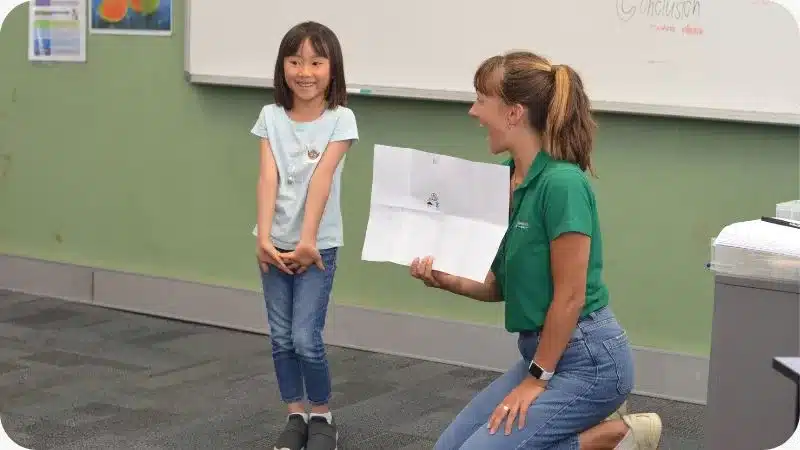
Defining EQ – what exactly is it?
A textbook definition of EQ is:
“A set of emotional and social skills that influence the way we perceive and express ourselves, develop and maintain social relationships, cope with challenges, and use emotional information in an effective and meaningful way.” (Multihealth systems, 2011)
In more practical terms, we may say that EQ is the ability to understand and manage our own emotions, and subsequently use them not only to reduce stress but to learn how to communicate effectively with others, exhibit empathy, harness resilience, and minimise conflict. Essentially, we are not numbing emotions or losing control of them, but learning how to identify them in ourselves and others, constructively work with them to allow us to form a healthy relationship with ourselves and those around us.
Several psychologists and neurobiologists – and now academics, employers and leaders alike – have all come to honour and embrace the significance of EQ. Not because it’s new or ‘trending’, but rather because it has reemerged, resurfaced and been resuscitated by more hard science! And the proof is in the pudding – emotional intelligence is fundamental for personal happiness and well-being; it makes us better communicators and helps us thrive in our professional and personal lives.
Still not convinced?
Have a good think for a moment.
Consider all the people you know who exude happiness – who have a fulfilled life.
Do they simply have a high IQ, or do they have the capacity to navigate life with self-awareness, empathy, resilience and adaptability?
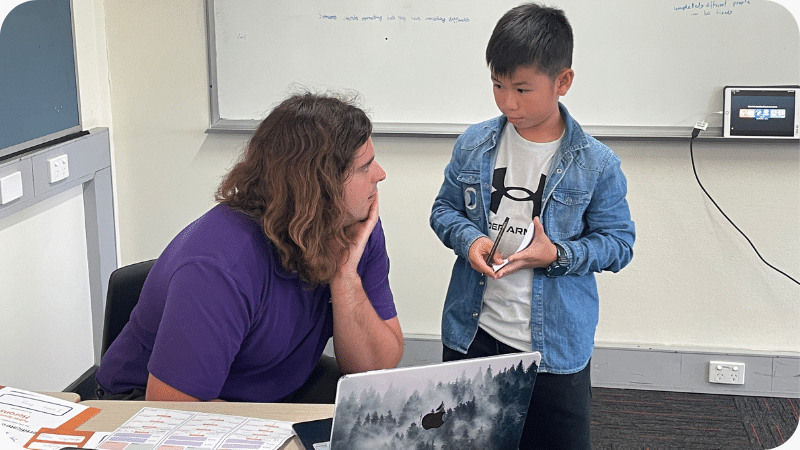
Help! I need to boost my EQ!
The wonderful news is that EQ is not fixed or set in stone – it is a learned ability that we can continue to develop throughout life, ultimately helping us evolve into the best versions of ourselves.
According to leading EQ experts, what are the three tips to further develop our EQ?
- Stop and think before reacting to a stimulus.
- Think about how your reaction will impact you and others in the short and long term.
- Learn how to listen and when not to respond. Listen deeply before responding.
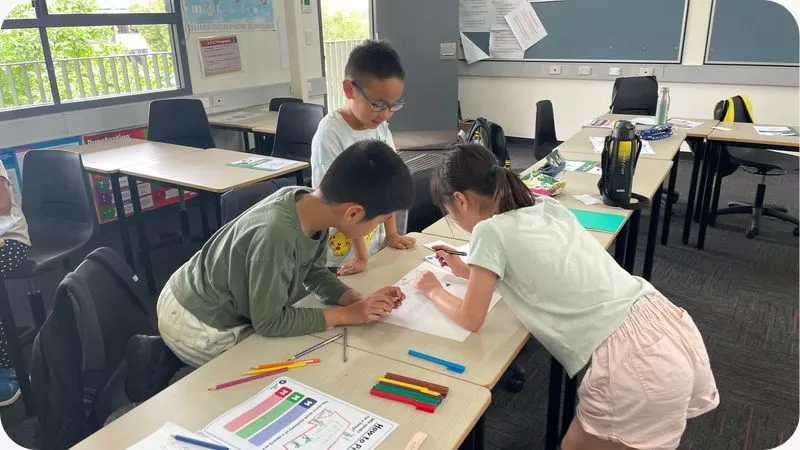
What can we do as parents?
The first seven years of childhood form the foundations of our child’s character, including their EQ. That is not to say that everything we do after the age of seven becomes irrelevant, rather the first seven years are the most crucial building blocks for EQ.
Parents are the first and most influential emotional coaches, and although this sounds daunting, the key lies in modelling desirable behaviours most of the time – not being ‘perfect’ or ‘flawless’ all the time. Neurobiologist and leading EQ expert, Daniel Goleman, explains that we as parents simply need to show up, listen, empathise, and spend time with our children – showing them what a good human (importantly, not a perfect person) looks like, and the rest will follow.
The importance of ‘showing’ rather than ‘telling’ lies in the development of mirror neurons, which are essentially cells in the brain that are activated and developed by observed action. As the old adage says, “Monkey sees, Monkey do”.
By the time children turn seven, their mirror neurons are more or less developed, and difficult (but not impossible) to change. This loops back to why the first seven years are the most crucial.
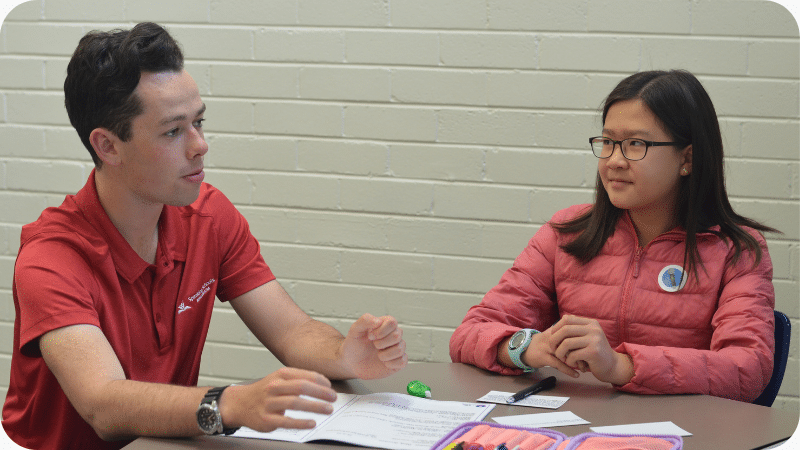
How SSA can help?
We at Speaking Schools truly embrace the importance of a holistic educational experience that builds children’s soft skills.
Our programs are aligned with fostering empathy, effective communication, and strengthening self-confidence and resilience in order to prepare our students not only for Debating and Public Speaking, but for their future more broadly!
Our philosophy lies very much in building well-rounded humans that can adapt and evolve in this ever-changing world.
Get in touch to learn more!
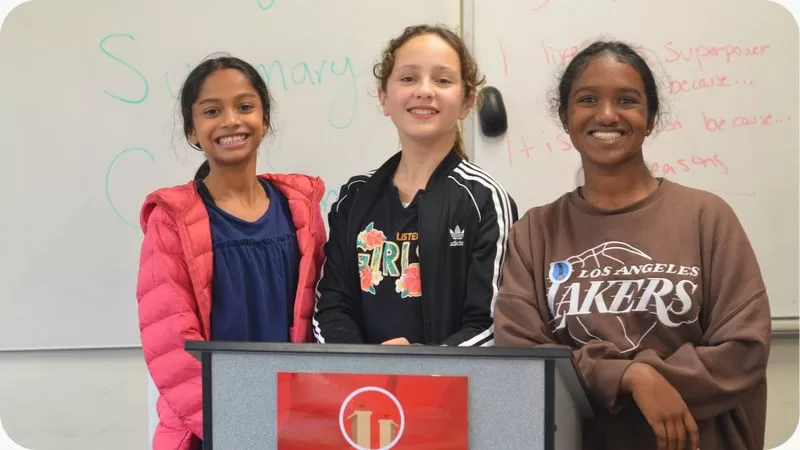
Gather round people I’ll l tell you a story
An eight-year long story of hard work and pride
Because from little things, big things grow.
The tune to Paul Kelly’s iconic song swirls around as we fondly reflect on how Speaking Schools started and how it has evolved and grown to what it has become in 2023.
Out First Holiday Workshops
Founded in 2015 in response to a lack of public speaking and debating coaching on the lower North Shore of Sydney, Sydney Speaking School (as it was then known) was a drop in the ocean.
To give you a better idea, our very first program comprised a modest number of twenty-six students and four coaches. The summer cicadas were chirping, Sydney’s heat was sweltering, and our eager and enthusiastic team were fully fuelled with adrenaline and excitement – Summer 2015 was the first step towards a bright future!
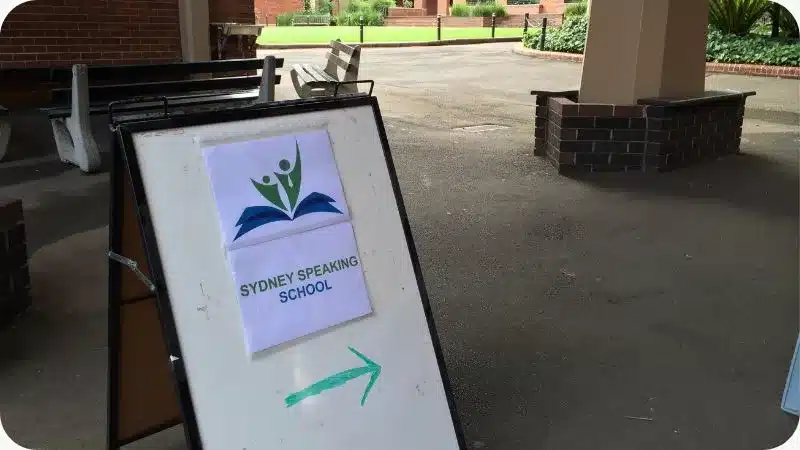
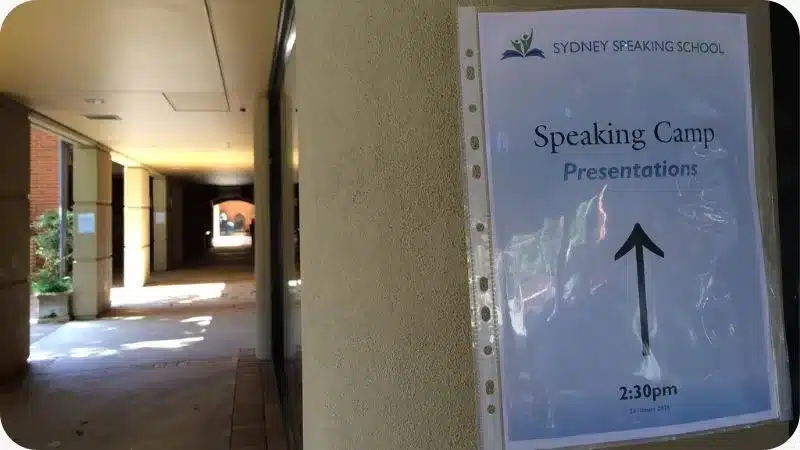
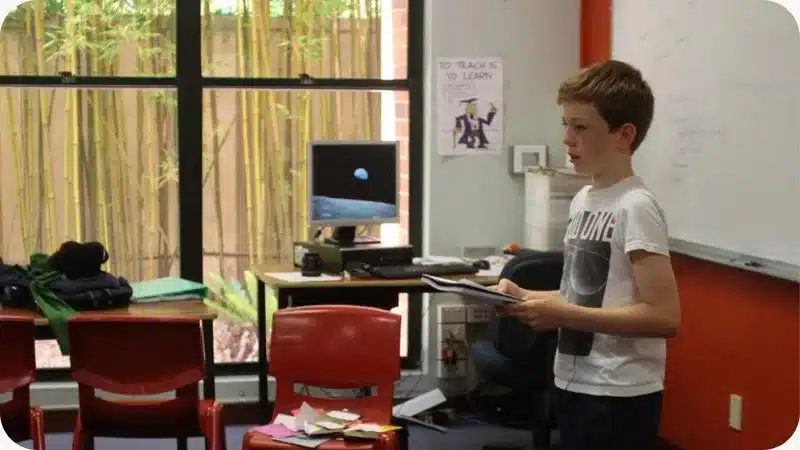
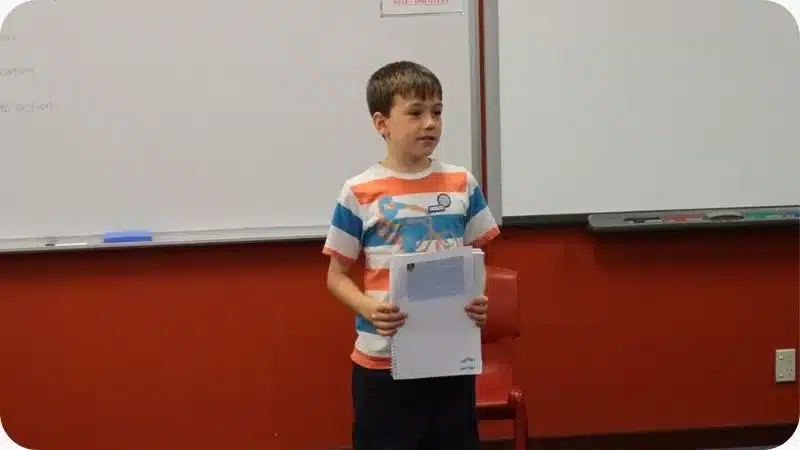
The Early Years
Over the first few years of our existence, we slowly grew our organisation to provide more and more students with the soft skills they need in modern classrooms.
After building up our presence on the Lower North Shore across 2015, we really started to find our feet in 2016 when we:
- Ran our first in-school program in Term #1;
- Opened our first set of weekly term programs in Term #2; and
- Expanded our holiday workshops to Western Sydney in the July Holidays.

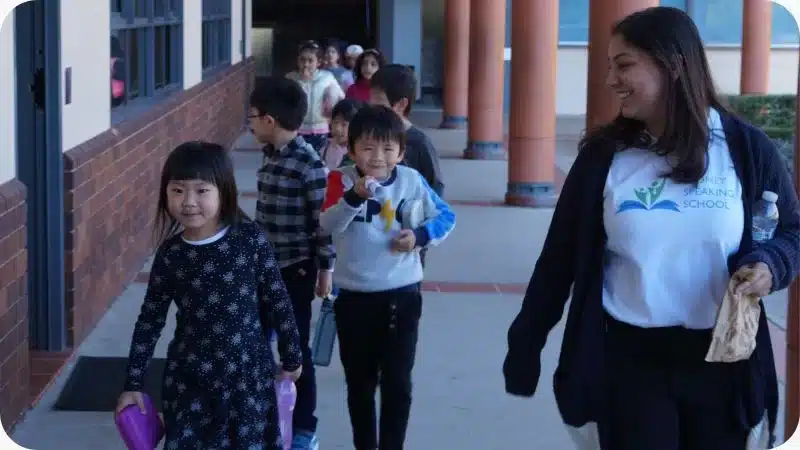
This was followed in 2017 & 2018 with a branding change – becoming ‘Australian Speaking Schools’ in July 2017, and adopting our animal icons for the first time in late 2018. These two years also had a number of firsts for us, including:
- our first foray into another city;
- running our first interschool programs; and
- our first-ever international programs over in China.
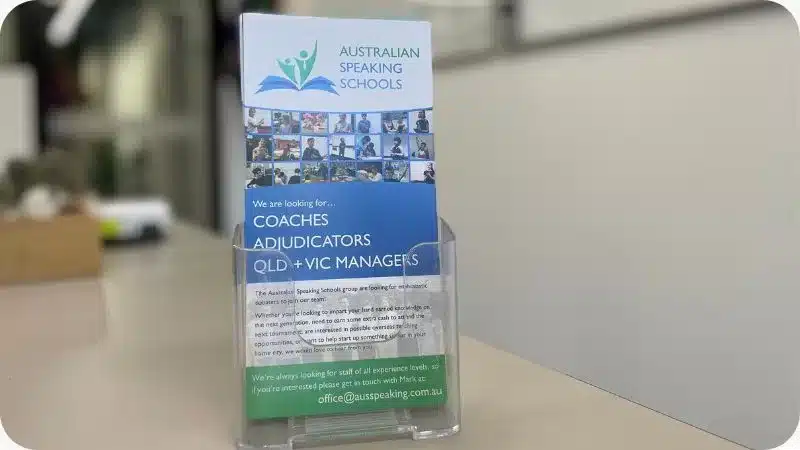
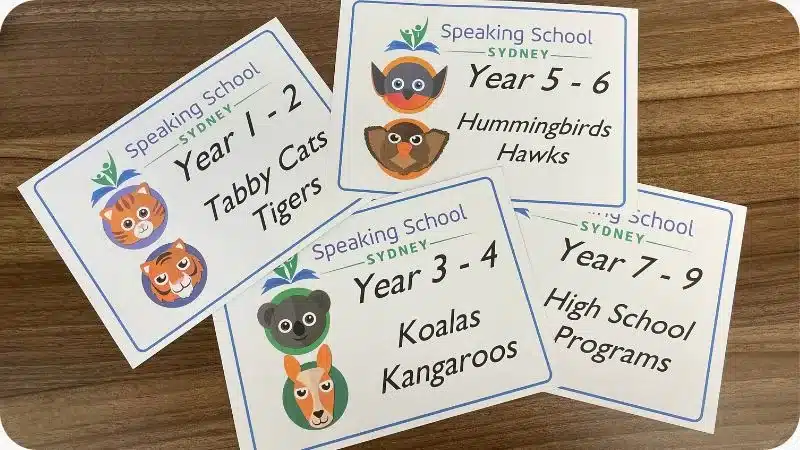


Across 2019 we continued to expand, opening multiple new holiday and term program venues, working with a range of new schools and running a record number of overseas programs.
This last point is of particular note – over the two years we worked in China, we took six trips across to Hangzhou and Chengdu, helping hundreds of school and university students improve their English, critical thinking and communication skills through various intensive public speaking and debating workshops. This was in addition to over a thousand students participating in our online programs and competitions over this period.
It also marked the year that we settled on our forever name – Speaking Schools Australasia – and began expanding the management team into what it is today.
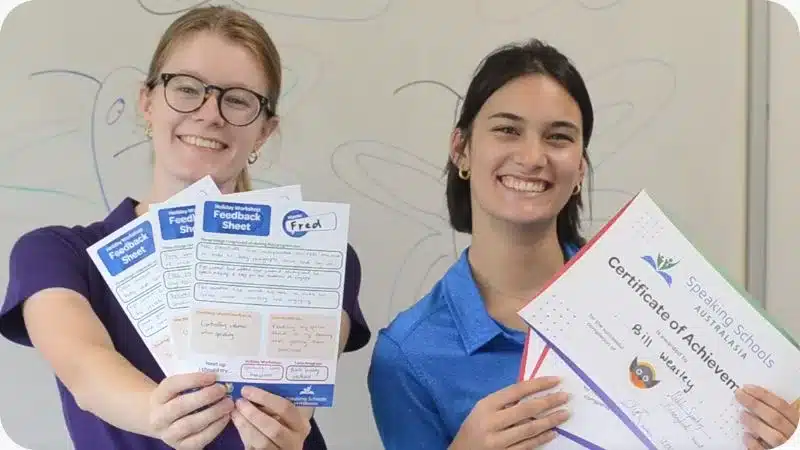

The Lockdowns
Like everyone worldwide, early 2020 brought some substantial changes to SSA. Having heard about this new flu going around China and Italy, like most, we didn’t overthink it at first – at least not until we were forced to cancel all of our in-person programs in March 2020 (ironically across the two weeks straddling our Managing Director’s wedding, which was substantially smaller than first planned).
Thankfully, our experience with China meant that we were already experts in online program offerings, and we were able to adapt our programs online very quickly – one of the few organisations that were able to do so.
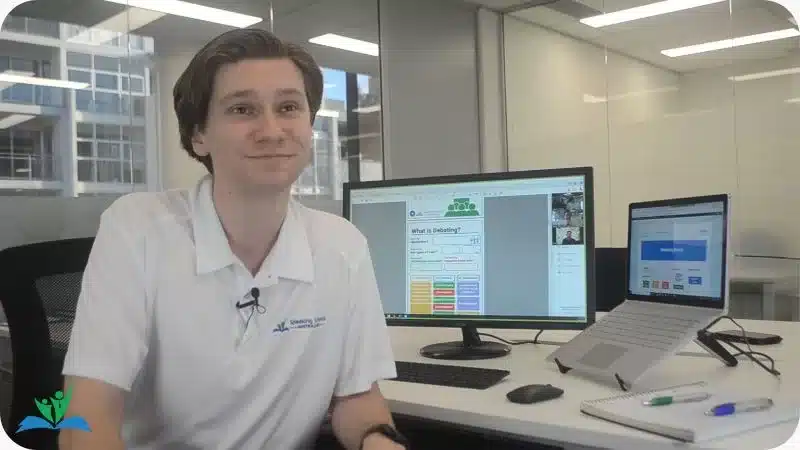
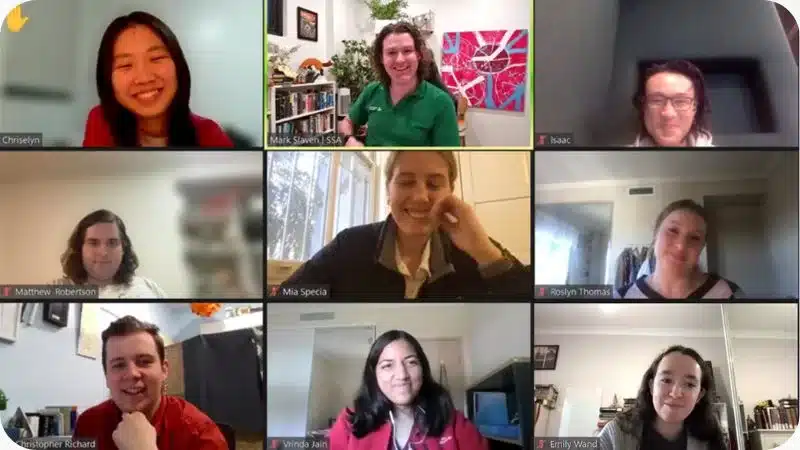
Over 2020 (and then again in the second lockdown in 2021), we were able to offer our unique brand of public speaking and debating classes online, catering for an even wider audience than we had ever hoped – reduced running costs meant that we were able to offer programs at a lower price point, and the digital nature of the classes meant that students could join from anywhere (we even had students join from all over the world, from Iran to Ireland).
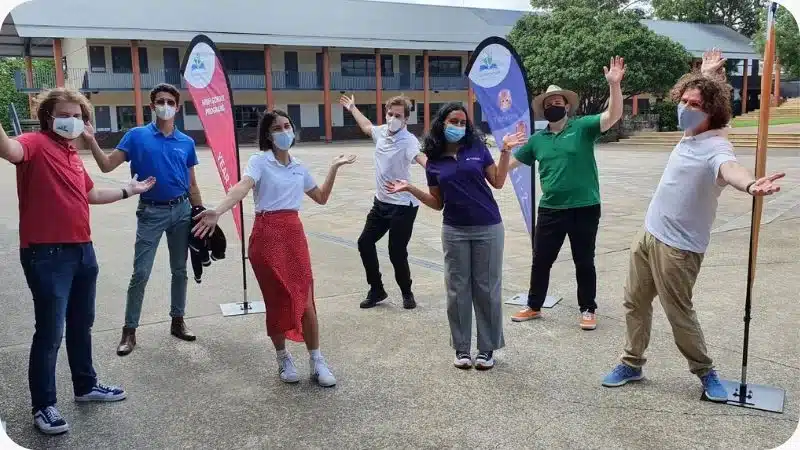
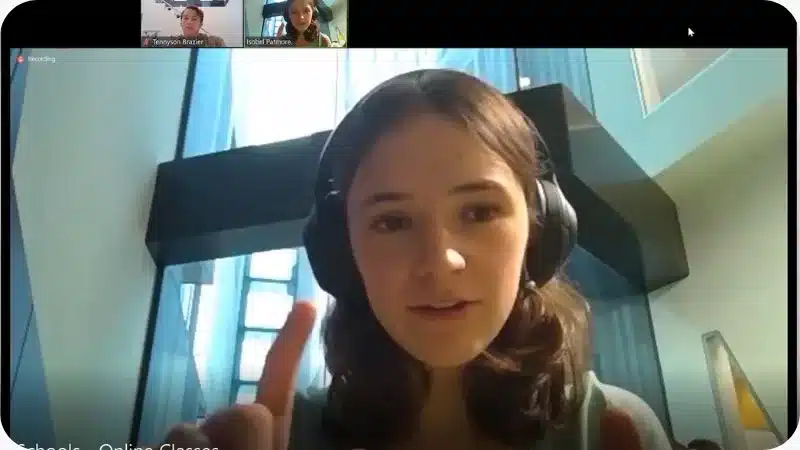
This period also allowed us to work on some of our other major projects, the two biggest being the Speaking Syllabus (which is now the largest set of public speaking and debating resources in Australia) and our first set of YouTube videos, our Conquering Debating and Speak to Inspire series (which are both still very popular on YouTube today, racking up just under a thousand views a day on average).
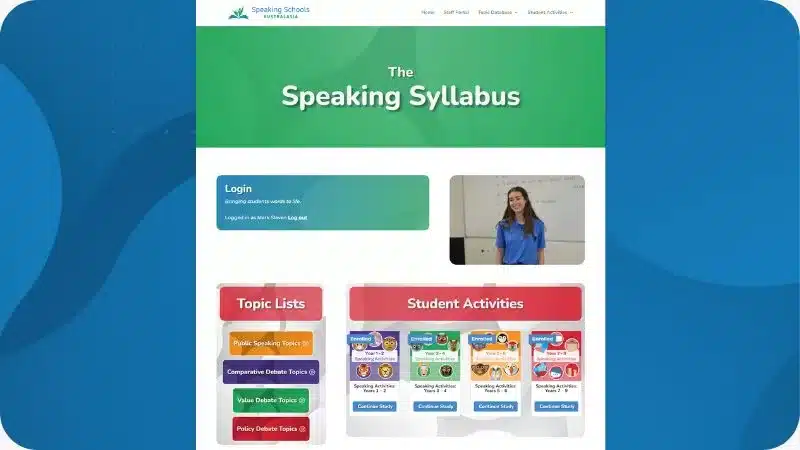
The Present Day
As we moved away from lockdowns, SSA has continued to thrive – since January 2022, we have:
- helped thousands of students build their self-confidence and speaking skills;
- opened nine new venues for term programs in Sydney;
- worked with dozens of schools to help their students feel more confident;
- maintained our online public speaking and debating coaching;
- run multiple interschool competitions;
- been listed as a finalist in the Australian Small Business Champions Awards two years running; and
- begun expansions into both Melbourne and Brisbane!
We are living proof that from little things, big things grow.
Speaking Schools Australasia could not have done it alone. The reason we are standing here lies in the hard work and sacrifices of not only its founders Dan and Mark, but every single family member, friend and member of staff who has given their time, invested their passion and devoted their energy to its journey of transformation. The parent and student community who believed in us and returned for more programs, for those who helped spread the word, for those who gave us a chance – we thank you. Nothing in life is done entirely alone – it takes others, often a community, to make the impossible possible!
Our goal has been (and will continue to be) to provide as many students as possible – whether shy or outgoing – with the tools they need to flourish as confident, articulate, and engaging speakers.
We are confident our future will continue to be bright as we hold onto our values, our integrity and choose quality – every single time.
We look forward to you sharing many more years to come!


Whilst the Australian schooling system is split between public, private, Catholic systemic and homeschooling, there is a unique subset of ‘selective schools’ which exist within the public system of most states.
Whilst most of these are located in New South Wales – there are 17 fully selective, 25 partially selective and four agricultural schools – you can also find similar selective schools in most other states.
Let’s dive into what makes these schools special, their entry requirements and how public speaking and debating can help give students an edge.
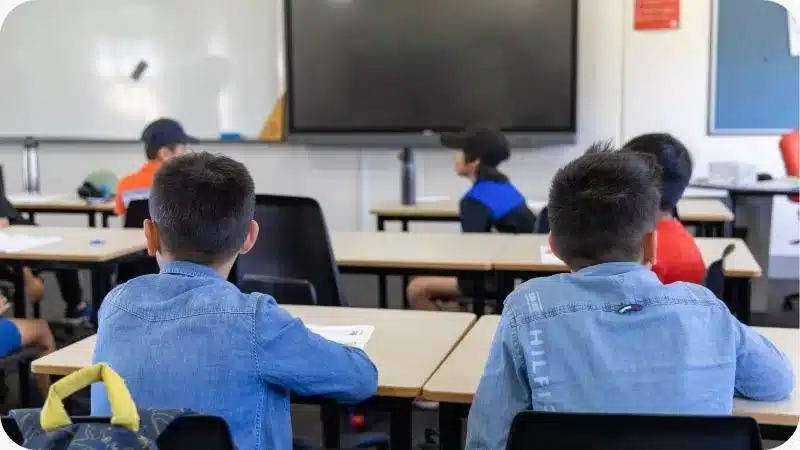
What are selective schools?
Whilst selective schools sit within the public education system, they are unique in many ways.
Firstly, all students must pass a special test to enter (more on this below), which means that almost everyone who attends these schools is a high achiever. By grouping students of similar academic abilities, they can push one another to improve continually, raising the academic achievements of everyone within the cohort. There is also evidence that grouping gifted students together can similarly be good for their emotional well-being.
Secondly, given the students can get through content faster than in comprehensive schools, this means that teachers can move through concepts at an accelerated rate. This not only means they get to more complex ideas earlier, but also helps students feel a greater level of satisfaction with their schooling.
Thirdly, they get the advantage of having more money to invest in education without the requisite school fees for parents. Whilst there aren’t any additional school fees, it’s been reported that selective schools obtain approximately $1.4 million more in voluntary donations than comprehensive schools – given these are government bodies, this money is then directly re-invested back into the students, helping build their education.
Finally, they simply get good academic results. Of the Top 10 schools that completed the NSW Higher School Certificate in 2022 – including all private schools in the state – six were selective schools. One particular school – James Ruse Agricultural College – topped the HSC Honours List for the 27th year in a row (yes, every year since the late 1990s). Many of those looking for great academic results can find them in the selective system.
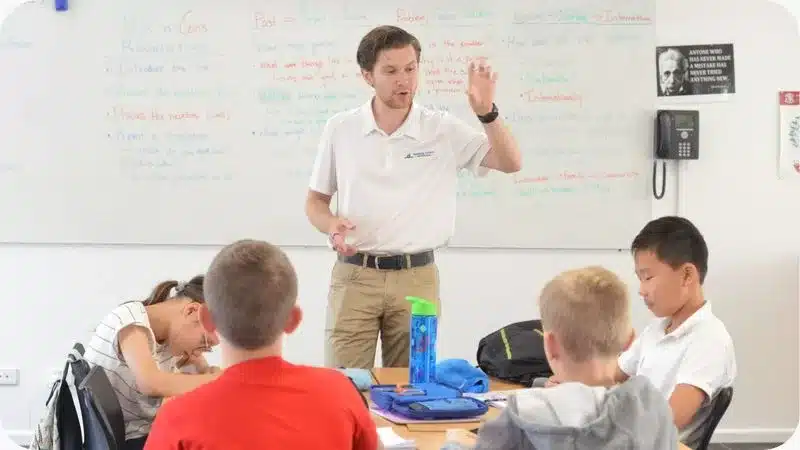
Selective schools sound great – what’s the catch?
As with all great things, there is no such thing as a free lunch when it comes to selective schools.
Selective schools require special tests to enter. Whilst these vary from state to state, they generally involve elements of reading comprehension, mathematical reasoning, writing skills and critical thinking. Importantly, rather than assessing previous success, these tests are tailored towards assessing future ability – they are designed to ensure that the students entering selective schools are ready for the rigours ahead.
Given the unique opportunities these selective schools offer, it’s no surprise that many parents would love for their children to attend. That said, for the 2023 NSW selective school exam, over 15,000 applicants are vying for only 4,248 places (for comparison, there are around 60,000 students in each grade at public schools in NSW).
Given the stiff competition, it’s similarly unsurprising how much additional effort and investment parents are willing to undertake to help their child secure a spot.
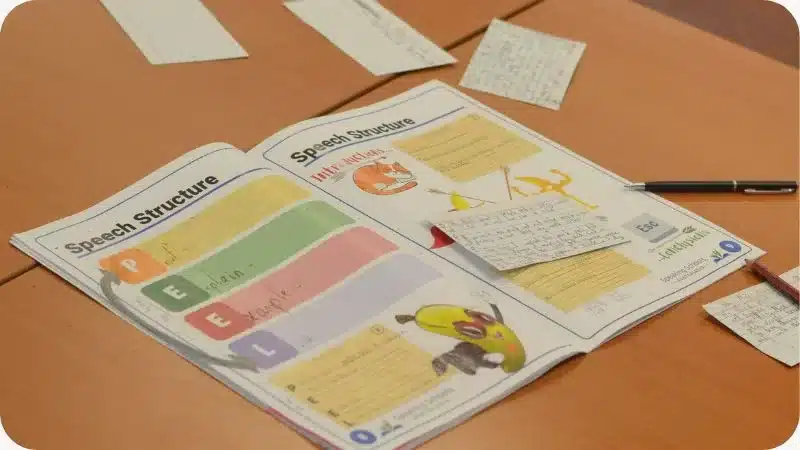
Sounds hard – what’s on the selective schools test?
Whilst there are sections on comprehension, mathematics, and writing, the most significant single section in the NSW test (comprising 35% of the final grade) looks at ‘thinking skills’, whilst half of the Victorian test relates to ‘General Ability – Verbal, Quantitative and Writing’. We’ll use the phrase ‘critical thinking skills’ to refer to these concepts (to keep things simple).
Critical thinking skills are essential for success in life generally. Having the ability to think critically and objectively about any given situation is crucial for making informed decisions and taking appropriate action. Being able to evaluate information accurately, analyse different points of view, combine reason with intuition, spot inconsistencies, and question assumptions are all essential parts of critical thinking. This can allow us to effectively solve problems and make better decisions both in our personal life as well as in our professional lives. Having a sound approach to critical thinking can also help us delve deeper into a topic or issue that we may not be familiar with in order to gain a deeper understanding of it. Therefore, critical thinking is an invaluable skill that everyone should strive to develop and use throughout their lives.
So, pretty important. But what do these critical thinking skills questions look like in practice?
The NSW Department of Education has several practice questions on its website to help students identify the type of questions they might be asked – one example from their website is:
To become a successful architect, you need to be creative and also have excellent attention to detail.
Will: “Sally is creative – she loves drawing and painting – and always checks her written work carefully. She’s sure to become a great architect.”
Evie: “James enjoys writing stories and has a vivid imagination, but he struggles with detailed tasks. Architecture is probably not for him.”
If the information in the box is true, whose reasoning is correct?
This type of question (as well as many others within the test) looks at formal logic – but what’s the best way to develop these types of skills?
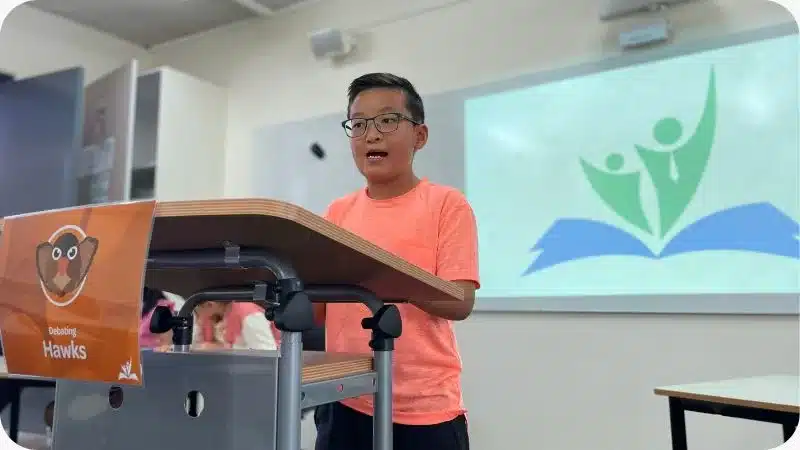
Winning the selective schools test with public speaking & debating
One way of improving critical thinking skills is to learn formal logic (although this is something that children find very difficult), whilst another is to sit lots and lots of practice tests (noting that these become repetitive over time).
However, there is another way to boost your child’s chances of success on a selective school test – developing public speaking and debating skills.
So how can this help?
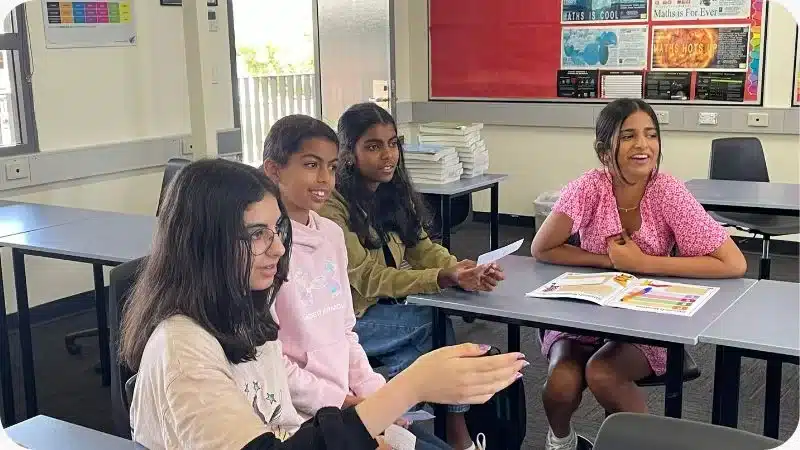
Learning logic in a real-life setting
Through debating, students learn how to construct logical and persuasive arguments in three ways.
Firstly, it helps students come up with logical arguments in real time. To win debates, you need to understand what your team’s case is, work with others in your team to express it clearly and ensure that each of your points is logical. This is a creative process during prep, but something that must be done quickly given time constraints.
Secondly, students are also required to recognise logical flaws in their opposition’s arguments too. This helps them develop a critical eye for logical inconsistencies under strict time constraints, an essential skill for selective skills tests.
Thirdly, students are required to defend the arguments made by others. When rebutting, it is never enough simply to attack the other team – you must also defend the points raised by your earlier speakers. By recognising where the other team has found logical flaws and patching them up, students develop an even stronger understanding of how to express themselves logically.
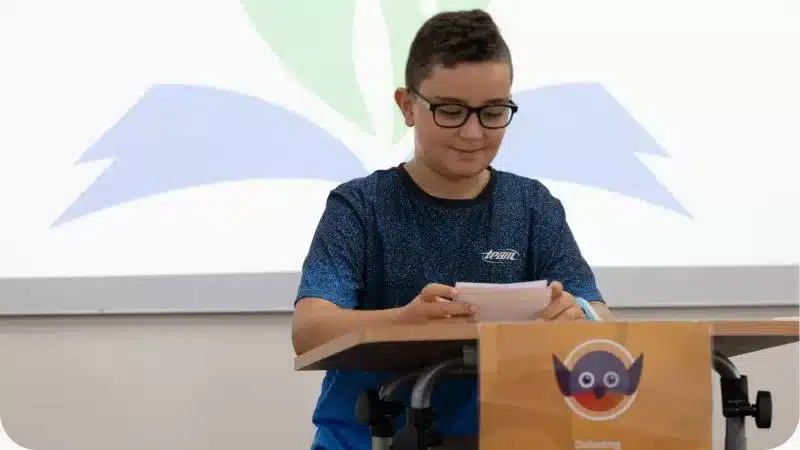
Quick thinking under pressure
Thinking quickly under pressure is another critical skill debating teaches students.
In a debate, students must think on their feet while responding to opponents – this requires quick thinking to ensure not only that they’re speaking coherently but also that what they are saying makes sense.
Moreover, when engaging with impromptu speeches, students are required to develop complex ideas without much (if any) preparation time before presenting them without having any opportunity to practice this particular speech.
Through practice, students are able to develop a sort of resilience in time-pressured situations such as examinations. In many ways, public speaking and debating are even more effective than practice papers – when presenting to an audience, there is always a level of pressure to perform (something that isn’t always true of lower-stakes practice papers).
Given this, regular public speaking and debating training can make a huge difference to a student’s ability to think quickly under pressure.
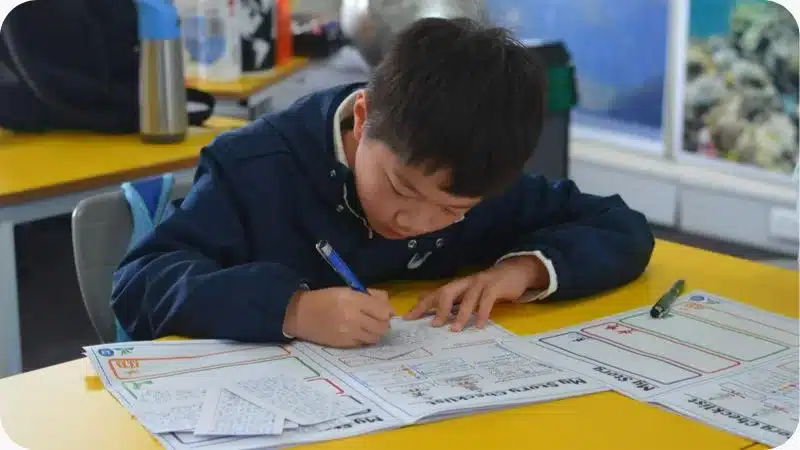
Developing creative ideas
Debating and public speaking are not just effective tools to develop confidence and communication skills, they also help students learn how to generate creative ideas.
Through debating, students have to think on their feet to come up with quick and convincing arguments. In doing so, they learn how to express themselves clearly while being able to think outside the box.
Public speaking similarly encourages students to expand their thoughts and be comfortable sharing them with others. As students build their speeches, they must develop innovative ways to capture and engage an audience which teaches them how to utilise diverse methods of communication.
Overall, debating and public speaking are invaluable tools for helping students develop creative ideas which can be applied in various settings – including (but not limited to) the written section of a selective schools examination.
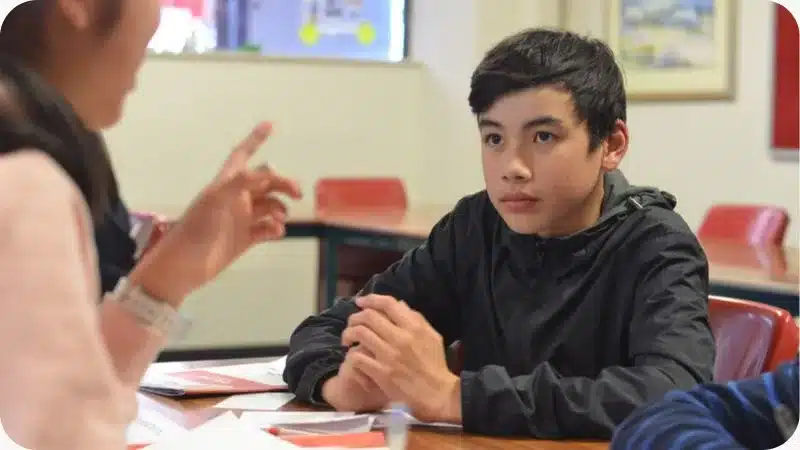
Comprehending others
Debating and public speaking are invaluable skills that also help students comprehend others better.
Debating achieves this in two ways. Firstly, it forces students to predict and consider what they think their opponents will present in order to make their arguments more persuasive. Developing this understanding of alternative perspectives can really help students with comprehension more generally, as it requires them to consider the perspectives of others over a long period.
Secondly, and potentially more importantly, students need to listen to others in a debate before responding to them. Unlike in most educational settings, those arguments are often poorly expressed or tortuously thought through, making it very hard to respond. By practising using techniques like ‘Condensing Smoke’, students become experts in comprehension not only of well-expressed ideas, but also those which leave something to be desired.
Similarly, public speaking encourages ‘active listening’, where you not only listen to the words being said, but also consider the implications of it – an essential life skill. This skill allows students to engage with prompts and other students in a more genuine way creating authentic connections and arguments.
Finally, both debating and public speaking help students develop empathy for those with different opinions or backgrounds, so they can better understand where people are coming from and why they hold certain perspectives. With these skills, students will be better equipped to navigate conversations with respect, understanding, and appreciation for others’ points-of-view – skills that definitely put them in a strong position for the comprehension section in a selective schools test.
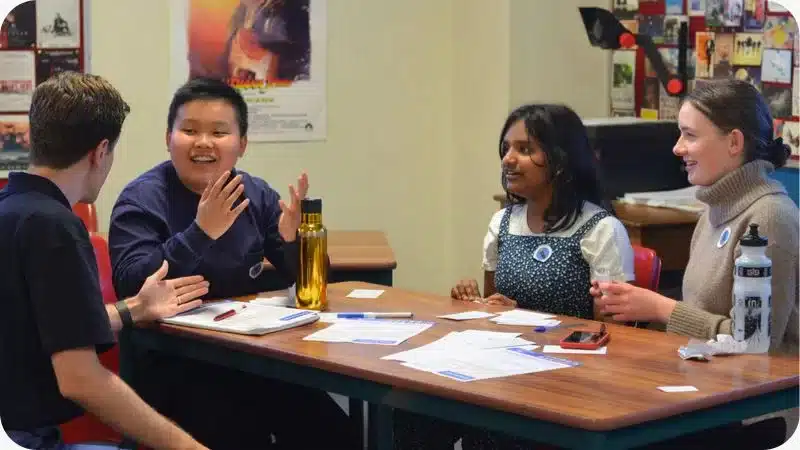
Learning about the world
Debating and public speaking are powerful tools that allow people to gain a deeper understanding of the world.
This is very natural in debating. By engaging in dialogue with others and considering different perspectives, students gain an appreciation of issues from all angles. Moreover, to improve their success rate in debates more generally, students are required to keep abreast of what’s actually happening in the world through their own personal research – there is nothing worse than being allocated a topic that you don’t know anything about!
Public speaking allows individuals to effectively communicate their own ideas and beliefs, while gaining insight into the thoughts and values of those around them. In order to develop effective speeches, students need to think through their ideas and check them against their own research and the perspectives of others.
Through these activities, people learn how to constructively engage with opposing opinions, develop empathy for other points of view, and build bridges between cultures.
Debating and public speaking are invaluable skills that give people the opportunity to explore our interconnected global society in a meaningful way – something that would help anyone seeking to undertake the selective schools test.

What About the Other Sections?
Whilst critical thinking skills represents the largest section of the test, public speaking and debating skills can also be helpful in other sections too!
Whether it is learning how to express yourself persuasively (which can be adapted from verbal to written expression), understanding a long-winded point during a debate (so you can prepare a rebuttal) or simply having the self-confidence to step through your logic on a maths problem, learning public speaking and debating can make a big difference to how students feel going into the test.
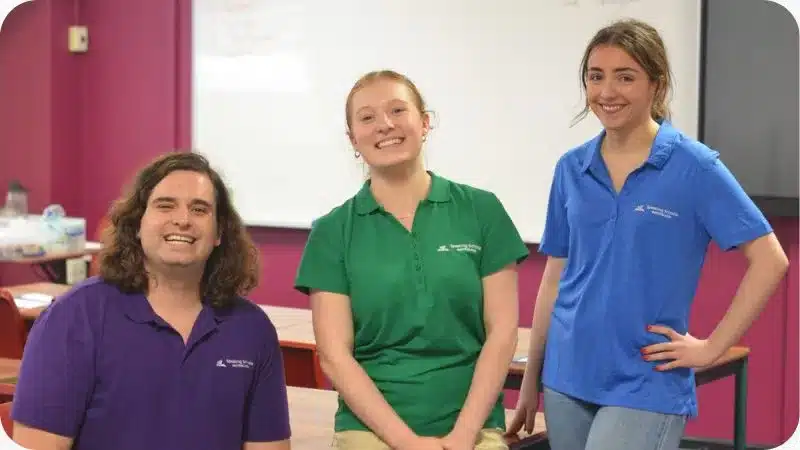
How can Speaking Schools Australasia help?
In conclusion, developing strong debating and public speaking abilities is essential for anyone undertaking the selective schools test.
With the right tools and guidance, as well as a fair bit of work over time, students can build these skills to really give themselves an edge in the selective schools test.
Fortunately, Speaking Schools Australasia offers an array of services specifically designed to give students the best chance at success on their journey towards top educational institutions.
Check out our programs to learn more about how we can help!
Did you know that debates have a variety of “topic areas” that you might be asked to explore? A topic area is a broad umbrella for a variety of debating topics that are all related to the same key theme.
Often, debating is about using your knowledge within the topic area to come up with reasons for or against the motion. So, it can be very handy to know what each main topic area is and what you need to know. That’s why we will be releasing a series of blogs breaking down each debating topic area, providing example topics and giving you tips on how to win every debate about that theme.
In today’s blog, we will take a look at Education Debates – debating topics that focus on the central issue of the Quality of Education. We will look at what it means to debate on this topic, give some example topics and ideas for research as well as provide handy tips on how to win debates about Education.
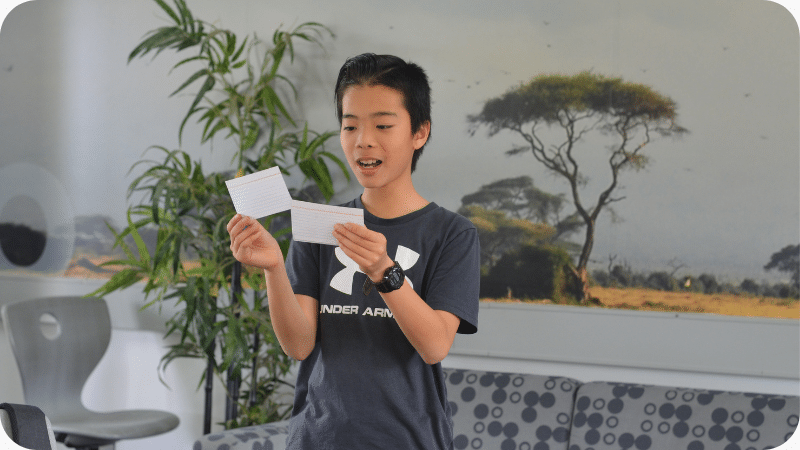
What are education debates all about?
Education debates are often about how to improve and maintain quality education for students across the country, state or even the world. It covers debates about improving access to education, the role of teachers and parents in children’s education, educational policy and technology in the classroom.
Essentially, education debates are about how to make sure that every student has access to quality education. This could be anything from discussions about school curriculum, teachers’ pay, school rules, uniforms, sports and assignments to debates about the way the school system is organised at the governmental level and whether University education should be free.
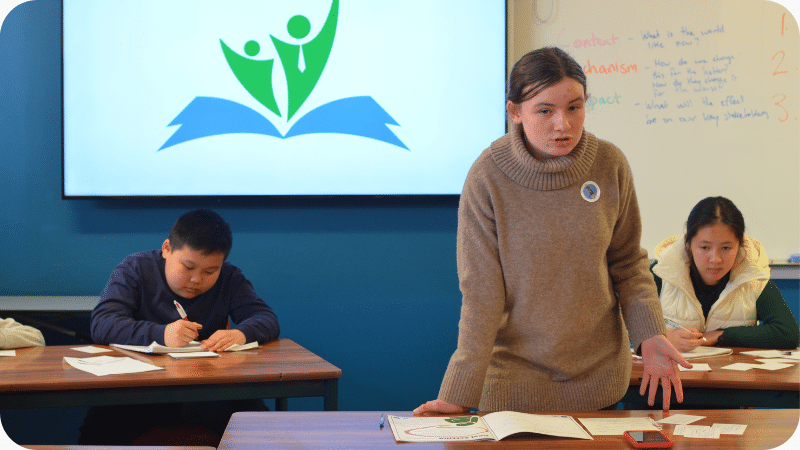
We can break down the broad umbrella of ‘Education Debates’ into a few sub-categories of education-related motions:
Student Life
- School uniforms
- Homework
- Socialisation time
- Exams and assessment tasks
- Access to technology
- Bullying prevention
- Mandatory volunteer work
- School sports
- School canteen menus
- Student leadership
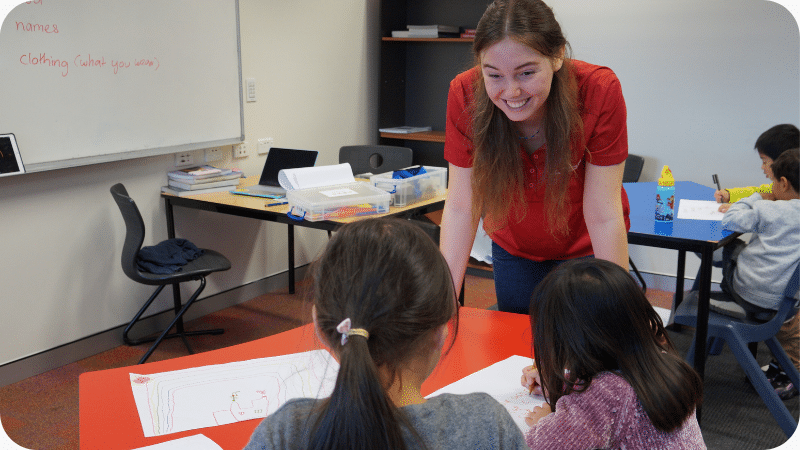
Teaching
- Teacher’s pay
- Flexibility of curriculum
- Class sizes
- Teacher responsibilities
- Administrative work
- Banned subjects
- Adding new subjects
- Allowing electives
- Teaching to the test
- Teaching approaches
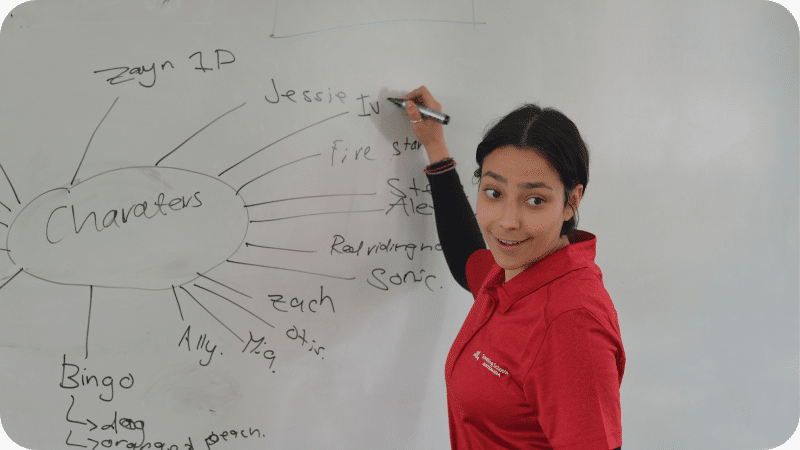
Educational Structure
- Public vs Private schools
- Selective schools
- Single-sex schools
- University enrolment requirements
- Standardised testing
- School hours
- Length of school holidays
- The division between primary, middle and high school
- University vs trade schools / TAFE, etc.
- Class composition (academically streamed, composite classes, etc)
- Online vs In-Person Education

Of course, many topics would fit into any one of these subcategories, and often themes from all of these different aspects of education will emerge in an education debate. It can be helpful to break it down this way to organise your notes and the information that you learn so that you can be ready whenever these issues arise!
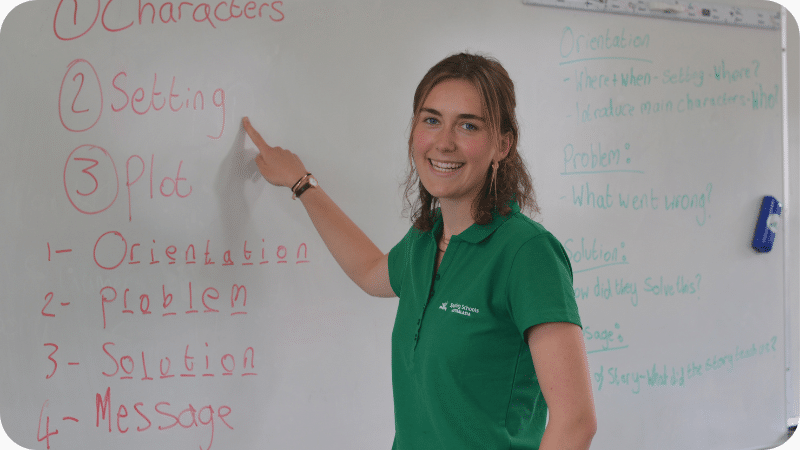
Who are the main stakeholders in education debates?
Within each main topic area, we can usually predict at least some of the main stakeholders who will be affected by the debating topic.
A stakeholder is someone who is affected by the motion being debated, and it is important to consider their point of view when constructing your arguments.
In Education Debates, the main stakeholders are usually students, teachers and parents. It is important to remember that these three groups want different things out of education, so their arguments will be different. For example, teachers might argue for better pay and more resources, whereas students will argue for more free time and less homework.
Other stakeholders may include government policymakers, school administrators and members of the general public who are not directly involved in education but can still be affected by the outcomes of an education debate.

Breaking down the stakeholders in education debates
Each of the main stakeholders in Education Debates can (and should) be broken down even further when you are making an argument about how the debate will affect them. Remember: not all parents are the same, not all students are the same, not all teachers are the same, and not all school environments are the same! So, it can be helpful to break it down.
For example, in a debate about banning homework, it is not very persuasive to say that it would be good “for students”. Instead, we could point out that certain groups of students who are particularly disadvantaged by the existence of homework would be benefited if it were banned.
This could include students with learning difficulties, students from low-income backgrounds and students who are already struggling in school.
Similarly, when debating the impacts of certain education policies on teachers, it can be useful to distinguish between the effects on full-time and part-time teachers. Full-time teachers may be more materially affected by changes to pay or resources, while part-time teachers may be more heavily impacted by shifts in workload or the number of hours they can teach each week.
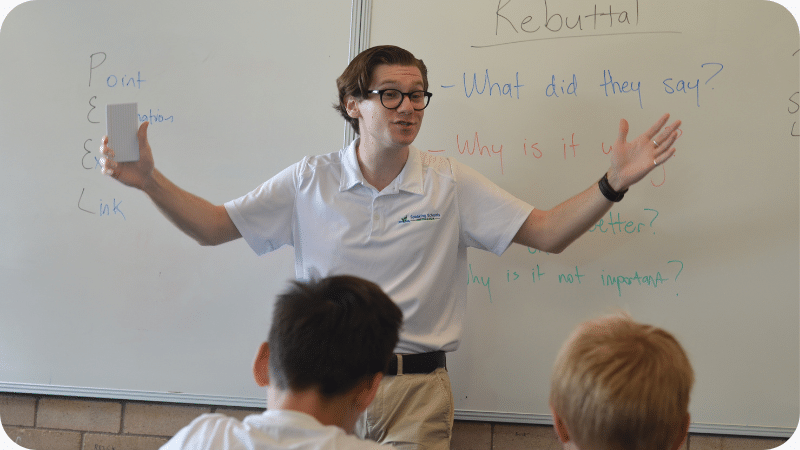
Below, we have listed some common subgroups within each of the main stakeholders that can come up a lot in Education Debates!
Students
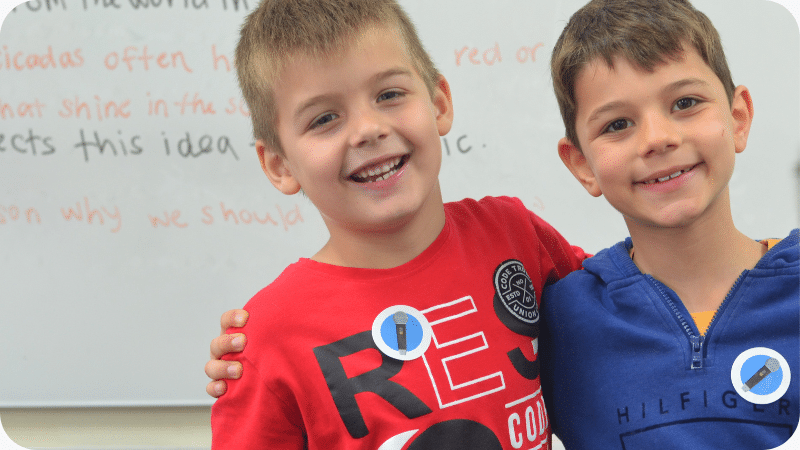
‘Students’ can be broken down into:
- Students with learning difficulties
- Students from low-income backgrounds
- Students who are already struggling in school
- High-achieving students
- Students from rural areas
- International students
- Gifted students
- Working students.
- Students who speak English as a second language
- Students who identify as Aboriginal or Torres Strait Islander background
Teachers
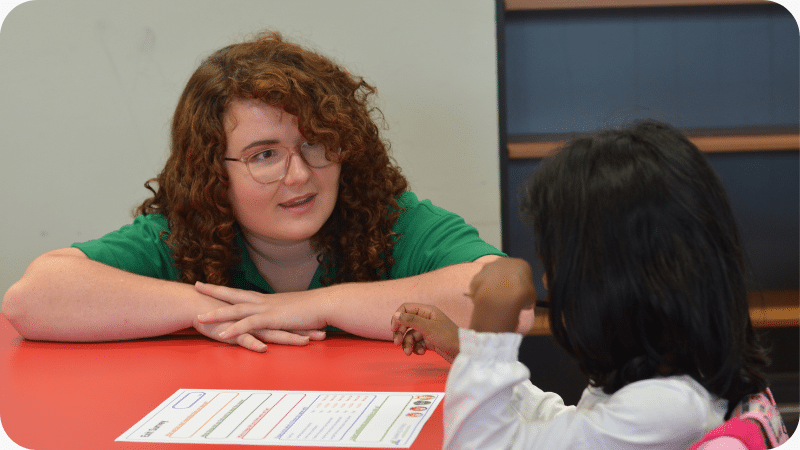
‘Teachers’ can be broken down into subgroups such as:
- Full-time teachers
- Part-time teachers
- Early career teachers
- Longstanding/experienced teachers
- New and innovative teachers
- Specialist subject teachers
- Primary/secondary school teachers
- Public/private school teachers
Parents
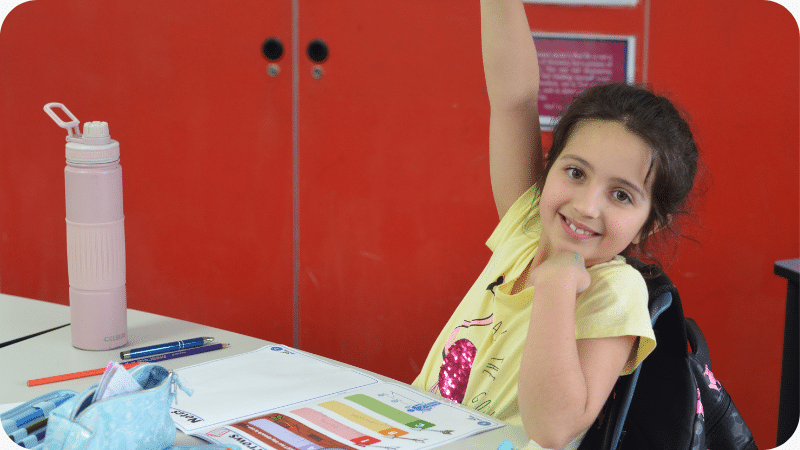
‘Parents’ can be broken down into subgroups such as:
- Single parents
- Parents from low-income backgrounds
- Parents with children who have learning difficulties
- Parents who have/have not attended university
- Parents of gifted children
- Working parents
- Immigrant parents
- Aboriginal and/or Torres Strait Islander parents
- Parents of children who speak English as a second language.
- Parents who work high hours
- Parents with many children
By understanding the different types of stakeholders and breaking them down into smaller subgroups, you can make your arguments more meaningful and effective. This will give you a better chance of convincing people that the topic has a positive impact on society more broadly!

What are some examples of Education topics?
Now that you know what education debates are all about and which stakeholders are affected, it’s time to think about some common education topics that can help you apply what you’ve learned! We’ve provided a list of 25 amazing education debating topics for kids. This list of education debating motions is a great resource to help you come up with ideas for education debates and practice your debating skills!
- That we should provide free school meals to all students
- That we should require all students to wear uniforms
- That we should abolish the national curriculum and replace it with a locally designed one
- That we should make schooling compulsory until the age of 18
- That we should teach financial literacy in schools
- That we should allow students to attend school online when they are sick
- That we should teach coding in all schools
- That we should make textbooks and other resources free for all students
- That we should provide teaching assistants to help with administrative work in all schools.
- That all exams should be replaced with assessment tasks.
- That we should abolish standardised testing
- That all schools should be required to provide options for students to choose vocational training and apprenticeships over academic classes.
- That private student devices should not be allowed in the classroom.
- That students should be allowed to pursue their own interests, rather than being forced to study a certain subject.
- That homework should be banned for primary school students.
- That mental health services should be available full-time in all schools.
- That teachers should have greater autonomy and freedom in the classroom.
- That classes should be grouped based on academic ability rather than age.
- That single-sex schools should be banned.
- That selective schools should be banned.
- That rural schools should receive more funding and resources than those in urban areas.
- That extra-curricular activities should be made compulsory in all schools.
- That student leadership positions should be determined by teachers rather than by student votes.
- That we should cap private school fees.
- That learning a foreign language should be compulsory in school.

There is a multitude of topics about education that can be discussed and debated, but these are a good place to start. Education is an important topic and is often a contentious one, so it’s important to consider all of the angles and perspectives on any given topic. Consider researching different aspects of each topic before taking part in debates about education-related topics.
What information should I learn to prepare for an education debate?
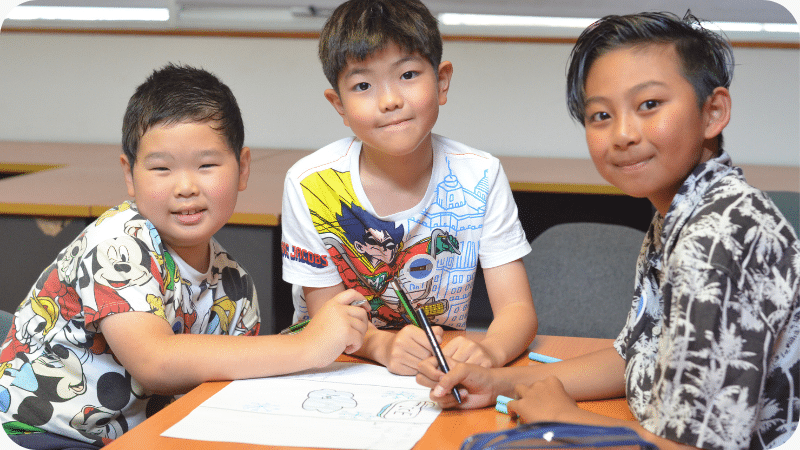
There are some basic things that can be useful to learn about for education debates. Try doing some research on the following areas:
- Educational policies: Make sure you understand the educational policies in your country and state, as well as any relevant international agreements. This is especially important if you are debating an educational topic that has to do with funding or policy changes.
- Current issues: Depending on the topic of debate, it can be helpful to research current events and trends related to education. This could include looking into issues such as the gender gap in STEM fields, or the global literacy rate.
- Educational research: Doing some research on educational studies and theories can help you understand a topic from different perspectives. This will give you more ammunition for your argument and help you recognize counterarguments.
- Statistics: Looking up some relevant statistics related to the topic you are debating could be helpful in supporting your argument. Make sure that any facts and figures you use are up-to-date and accurate.
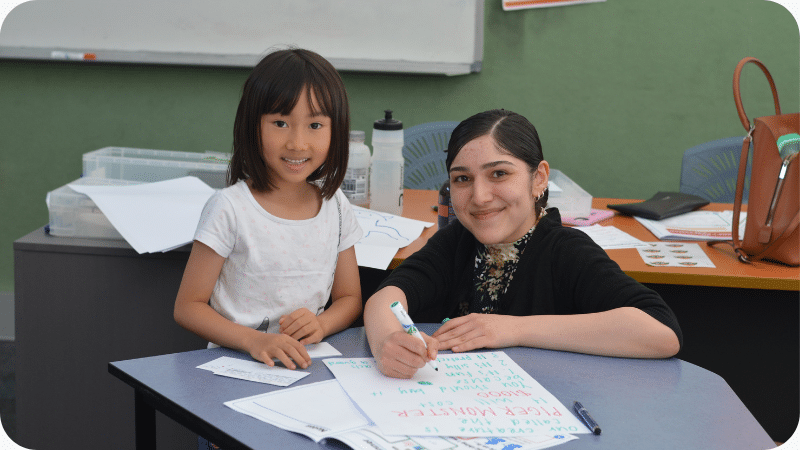
By doing research on these topics, you will be better prepared for any debates about education-related issues. Good luck!
The discussion of education is an ever-evolving one, and it’s important to stay informed on current trends and topics in order to participate effectively in debates about the subject. Researching educational policies, stakeholders, and example topics can all help you better understand the topic at hand, giving you the opportunity to make a strong argument for your position. We hope that these tips have been helpful and wish you the best of luck in your next educational debate!
One of the big goals that many students aspire to in both primary and high school is to become a part of the student leadership team. The opportunity to represent one’s peers in roles such as School Captain, Prefect or on the SRC is really exciting for young people who are interested in making a difference at their school.
Being involved in student leadership is a very worthwhile endeavour, not only for the students who are selected but also for the students who put themselves forward for the positions. The process can encourage kids to get involved with their peers, think deeply about what they want to see happen at their school and work on their public speaking skills.
Often, when students are interested in being a part of their student leadership team, they come to us to learn about how to be a more effective public speaker. Preparing for the speech you give to the rest of your school to get chosen as a leader can be a wonderful way to improve your chances of making a difference at school. In today’s blog, we’ll learn about what student leadership is, how to give a school captain speech (or election speech for any position), and more!
What is student leadership?
Many schools around Australia have student leadership programs which involve a variety of positions including:
- School Captain
- Prefect
- SRC Representative
- Sports House Captain
While the roles are selected differently at every school, one thing that many of these positions have in common is that they are elected by the student body. This process relies on students communicating effectively to their peers about what they would like to do if they were chosen for the role.
How do I get elected as a student leader?
There are a number of ways to improve your chances of being elected for student council. These include being actively involved at school and talking to your friends about what they would like to see changed at school.
The most important thing, however, is to work on your communication skills so that you can get elected. Public speaking is a key responsibility of student leaders, especially school captains, who are required to speak at school assemblies and on special occasions such as presentation day or Anzac Day. Public speaking is also essential for getting chosen in the first place, as the candidates are usually required to present a speech to the school about why they want the role!
How can we help you to become a better public speaker?
We have seen time and time again that any student, no matter how shy they are when starting out, can become a great public speaker with practice. There are lots of ways you can be ready to impress your school when the time comes to give a student leadership speech:
1. Practice your public speaking beforehand
Get into the habit of public speaking, working on your eye contact and ‘speaking manner’. A great way to do this is to get feedback from someone like a coach or parent who can teach you tricks to improve your speaking skills. A big part of our ‘Presentation Skills’ programs is focusing on the purpose of public speaking and strategies for building a persuasive speaking matter. We also build in lots and lots of individualised feedback to help with your specific speaking habits.
2. Prepare a well-written speech
Make sure to follow a clear structure of introduction, body, and conclusion. Our public speaking courses also teach structures to apply to the introduction, the conclusion, and how to use PEEL and other techniques for amazing body paragraphs!
3. Remember to capture the audience’s attention
Even a well-structured speech can be boring! It’s important to learn some of the ways that we can draw an audience into our speech, such as using personal examples, interesting facts or weaving in a narrative to your speech.
4. Bring lots of energy!
Stand out by being nice and loud, energetic and full of fun hand gestures & facial expressions. Your classmates will love to watch an engaging speech!
The journey toward student leadership is hugely beneficial for students, even if they never get selected for the role. We love hearing back from our students about how they used what they learned at SSA to get chosen for school captain or prefect, but we also love hearing from students who had a fun time giving a speech in front of their school and having a go.
Good luck to all the future student leaders working hard to become tomorrow’s well-rounded humans!
Are you looking for some incredible speech topics for kids?
Well, you’ve come to the right place!
In this blog post, we’ll give you 101 amazing ideas for speech topics that will have your young public speaker feeling confident and excited to take the stage for their next presentation. From discussing their favourite sports team to sharing a personal story, there will surely be a topic on this list that resonates with every child.
So without further ado, let’s get started!
Looking for some fun debating topics? Check out our blog on debate topics here!
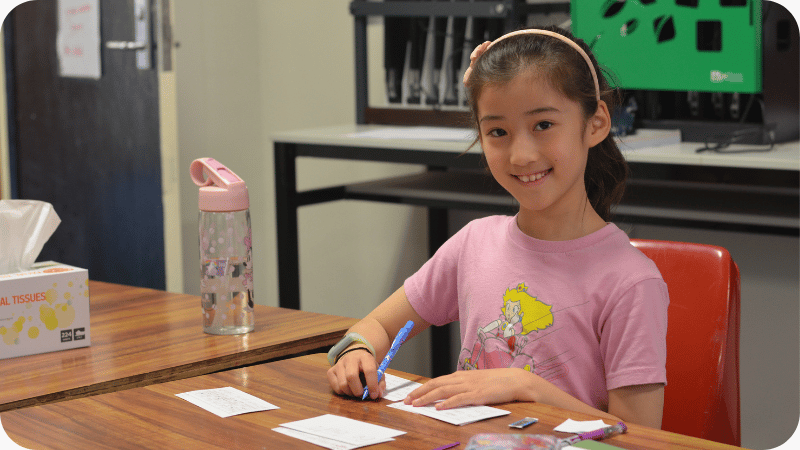
What makes a good public speaking topic?
Finding good speech topics, especially as a kid, can be an intimidating task.
As children, our interests tend to change, and it may be difficult to find speech topics that we can expand upon and still engage the audience.
It is important to remember that kids should aim to give presentations on any topic they are passionate about. Ideally, when looking for successful kids’ speech topics, school students should pick a particular topic:
- they know well, as this will help them give a good speech without too much extra research;
- that has enough content, which will help with speech length; and
- is interesting and relevant to the audience they’ll be presenting to.
Taking some time to consider all of these factors will go far in making sure kids create informative, valuable presentations that make their parents proud!
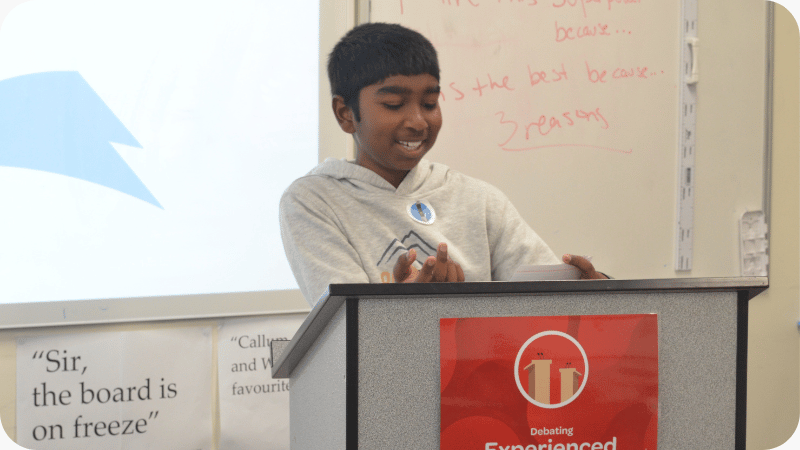
The three different kinds of speeches
Whether your child is a budding public speaker or simply looking to bolster their confidence in front of an audience, it’s important to be aware of the three main types of speeches they can give: Informative, Entertaining, and Persuasive speeches.
- An informative speech teaches people something as they explain a process, inform about a topic, or share information with an audience.
- An entertaining speech is more light-hearted and focuses on entertaining an audience with a story, joke, or anecdote.
- A persuasive speech aims to convince an audience of a particular viewpoint. In these types of speeches, it’s important for the speaker to have strong topic knowledge as well as supporting evidence to back up their argument.
By understanding these three speech styles, young public speakers can choose the speaking style that makes them feel the most comfortable and excited about the task of public speaking.
We have provided a range of topics that fit into each of these three speech types and therefore will be perfect for any young public speaker, regardless of their personal preference!
Remember: you can always put a spin on any speech topic to make it more informative, persuasive, or entertaining. Feel free to challenge yourself by turning one of our persuasive speech topics into a comedic presentation or taking an entertaining topic and using it to build a persuasive speech – there is usually no need to restrict yourself to one particular style of expression!
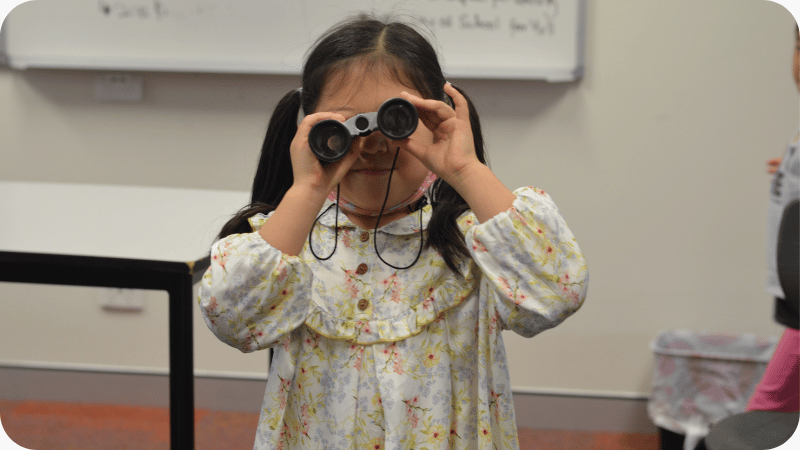
Informative Speech Topics
At our public speaking courses for kids, we know how important it is to find the perfect informative speech topic. We want your young public speakers to explore ideas and topics that resonate with their interests and spark their passion for presenting!
From urban bees to sports nutrition, science experiments to art history, the possibilities are endless!
Our list of kid-friendly speech topics provides a great starting point for creating an informative, engaging presentation. Whether they choose a familiar subject or something new and exciting, our goal is to support student excellence in every way possible.
Check out these informative speech ideas:
- Exploring the Benefits of Outdoor Play
- The History of Video Games
- How to Become an Eco-Friendly Consumer
- The Positive Impact of Music Education
- What Makes a Great Leader?
- The Science Behind Climate Change
- Benefits of a Plant-Based Diet
- Understanding the International Space Station
- Discovering Ancient Civilizations
- Exploring Different Cultures Through Dance and Music
- Effects of Social Media on Mental Health
- The Art and Science of Computer Programming
- Every Day Victories
- The Harms of Violent Video Games
- Types of Alternative Energy Sources
- Exploring Different Types of Art
- The Benefits of a Good Night’s Sleep
- Ancient Mythology and Folklore
- The Science Behind the Human Brain
- Famous Scientists in History
- The Most Delicious Meal of All Time
- Recycling and Waste Management Solutions
- Global Warming vs Climate Change
- Robotics: Past, Present, and Future
- Understanding the Solar System
- The Biggest Social Issues of our Times
- The Secret Life of…
- Investigating Animal Habitats in Nature
- Why E-Books are the Future
- Exploring the Wonders of Chemistry
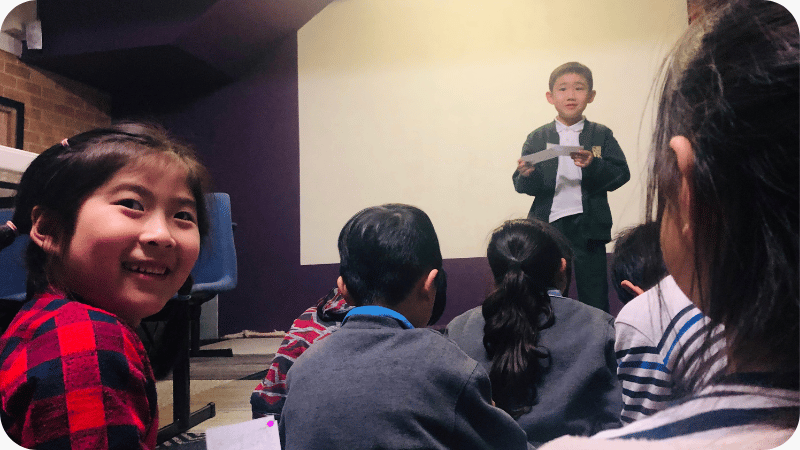
Entertaining Speech Topics
Figuring out entertaining topics for public speaking can be a challenge, especially when the speaker is young.
However, the right topic can be the key to making a great impression on your audience.
Whether you are interested in discussing robotics or telling stories of your own life experiences, there is bound to be an entertaining speech topic suitable for everyone!
Our rich variety of topics ensures that young public speakers have plenty of choices when it comes to finding what will make for a captivating performance.
Check out these 30 fun topic ideas that can humour, shock, or entertain the audience:
- Proof that We Live in a Computer Game
- The Best Jokes for Kids
- My Imaginary Friend
- My Crazy Summer Vacation
- How I Got In Trouble With My Parents
- Weird Foods Around the World
- Fun Facts About Dinosaurs
- Frighteningly Funny Ghost Stories
- If I Were a Cartoon Character…
- Embarrassing Moments We’d Rather Forget!
- Epic Pranks I’ve Pulled off So Far
- Interesting Reasons Why We Laugh
- Life Through a Dog’s Eyes
- My Favourite Outdoor Activity
- If I had One Superpower…
- Superheroes and Their Amazing Powers
- The Best Thing About Dragons
- Why Too Much TV is a Good Thing
- Funny Things I’ve Heard on the Bus
- Unusual Hobbies Around the World
- Weird Etiquette Rules That Don’t Make Any Sense
- How to Make Your Own Board Game
- Mysteries of the Deep Sea
- Exploring Outer Space: Astronomy for Kids
- Fantastic Fables from Other Countries
- Bizarre Traditions From Around the World
- The Art of Storytelling: Creative Writing Ideas
- Fun Facts About Animals
- Learning with Lego: Building a Better Future
- The Power of Imagination: Mindful Meditation Techniques
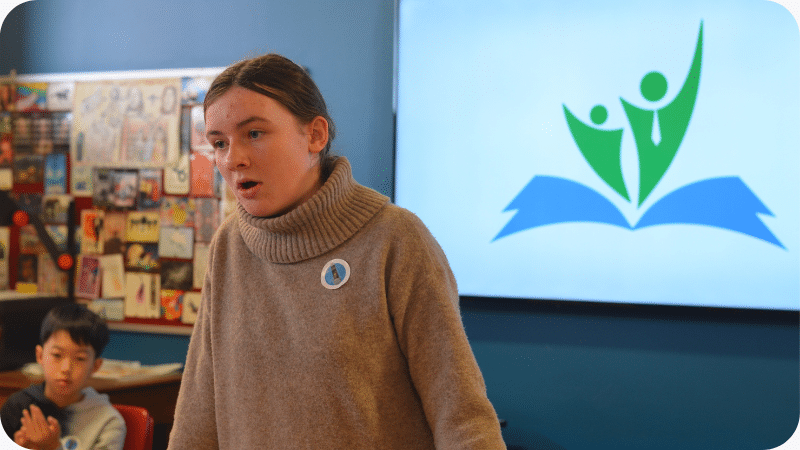
Persuasive Speech Topics
Writing a persuasive speech can be intimidating for kids, but it doesn’t have to be.
Not sure where to start? No problem! We have plenty of kid-friendly persuasive speech topics to get students’ creative juices flowing.
From discussing the importance of friendship and relationship building to spurring environmental awareness, we have the perfect persuasive speech topics for any young public speaker.
Become confident and display your power of persuasion with our helpful advice and engaging list of topics.
Have a look at these 30 persuasive speech topics that can help kids call others to action:
- The Benefits of Social Media
- How to Become a Responsible Citizen
- The Value of Having Good Manners
- Taking Care of the Environment: Reducing Pollution and Waste
- The One Thing I Know About Eating Healthy Foods
- Exercise for Kids: Why It Is Important
- The Impact of Technology on Education
- Building Better Communities Through Community Service
- Developing Self-Discipline for Success in Life
- Argumentative Strategies That Can Be Used In Everyday Life
- The Power of Positive Thinking
- Creating Lasting Memories with Family Time
- Exploring Different Cultures with Travel and Adventure
- The Importance of Teamwork and Collaboration
- My Favourite Restaurant
- Why I Learned a Second Language (and You Should Too)
- Exploring Causes for Climate Change and Possible Solutions
- Learning the Benefits of Reading for Pleasure
- Making Wise Choices When Shopping Responsibly
- Understanding Cyberbullying and Taking Action Against It
- Finding Success in Failure: Reframing the Mindset
- Learning About Money Management through Financial Literacy Programs
- Practising Compassion, Kindness, and Respect For Others
- Building Self-Confidence Through Leadership Activities
- Using Creativity to Solve Everyday Problems
- Exploring Ways to Balance School and Extracurricular Activities
- Making Healthy Choices Through Positive Leadership
- The Wisdom of Being a Young Person
- Promoting Diversity, Equity, and Inclusion in Schools
- Learning How To Analyze Fake News with Critical Thinking Skills

Classic Speech Topics for Kids
Not sure if you want to do an informative, persuasive, or entertaining speech?
Are you looking for classic topics that have been done time and time again but are popular topics for a reason?
Look no further than these classic speech topics:
- My Favorite Book
- What I Learned From My Pet
- How to Have Fun Without Technology
- The Place That Inspires Me the Most
- The Power of Music
- What It Means To Be A Good Friend
- My Best Day Ever
- If I had Three Wishes…
- Living a Simple But Fulfilling Life
- Celebrating Diversity in Our Community
- My Hero: The Person Who Inspires Me the Most

Impromptu and Abstract Speaking Topics
Whilst approaching impromptu and abstract speech topics can be daunting, there actually isn’t much difference between them and normal speech topics.
Impromptu speech topics are usually more generic, providing students with the opportunity to reflect on their own lived experiences and share that with their audience. Rather than spending time finding the perfect content to fit impromptu speech topics, the better approach is generally to bend the topic to something that you’re familiar with and comfortable speaking about, whether it be knitting being the best part of your day or a conversation you had with a friend about time travel.
Being prepared will give your child the confidence necessary to make their presentation successful – so if you’re not sure what speech topic you’re likely to get, make sure to think up plenty of anecdotes before the presentation!
Picking the perfect speech topics for kids
Now that you have a fantastic speech idea, it’s time to get writing!
Let our resources help guide you through the speech crafting process (we’ve got plenty of blogs and videos to help) and give your child the opportunity to shine on the stage. Don’t forget to practice your speaking manner either, including your tone of voice and body language!
Moreover, our in-person and online courses provide step-by-step instruction and guidance throughout each program so kids learn exactly how real-world speaking works – all tailored specifically for your own future speaker.
You can also visit our YouTube Channel for advice to guide you through the entire speech writing process, as well as expert tips for practising your performance!
So don’t wait – take advantage today and get ready to stand out from the crowd with an amazing speech!
The task of writing a speech can be especially daunting. For young public speakers, often it is the first time that kids have ever had to write a piece that is intended to be listened to rather than read by their audience. On top of this, the task of finding a topic and turning it into a speech that your child feels comfortable presenting can be very overwhelming (especially when tackled all at once).
That’s why one of the best things a young public speaker can learn is how to structure their speech. As parents, knowing how to structure a speech for kids can take the task of speech writing from overwhelming and intimidating to fun and enjoyable. All you need to know is the purpose of a speech structure, the different parts of a speech, and ways to use a speech structure for kids. Luckily, all of these aspects are covered in today’s blog, so be sure to read on!

Want to learn more ways to improve at public speaking? Check out our seven key tips here!
The purpose of speech structure for kids
There are a few important reasons why we structure our speeches as public speakers.
It makes it easier for the audience (and ourselves) to listen and understand
Writing something that is meant to be presented and listened to is very different to writing something for your class teacher to read. The main reason why kids need to know how to structure their speeches is to ensure that the speech is clear and easy to follow for the audience. With a well-structured speech, the audience can more easily follow along and understand its key points.
Why do audiences prefer to hear a structured speech?
Well, it’s all about flow. If the speech has a clear structure and transitions between each of its major points that are easy to follow, then this creates a ‘flow’ effect for the audience which can keep them engaged in what you have to say.
Furthermore, if your speech is structured correctly then it can be more convincing, as it will make your main points appear even stronger and more impactful.
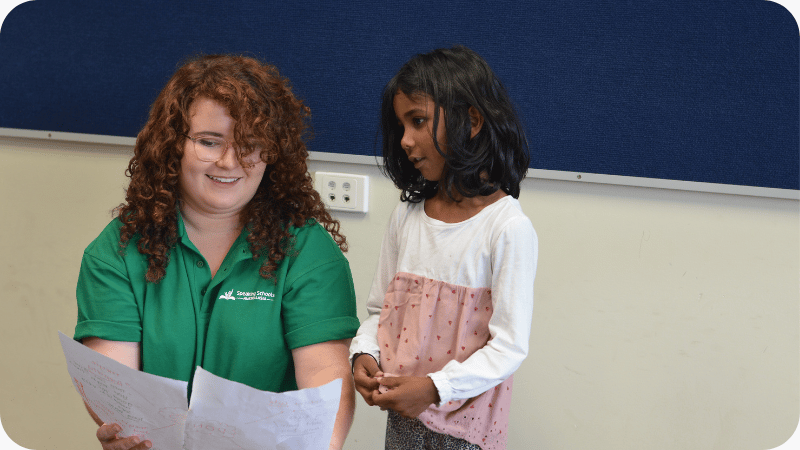
It helps us focus our content
When you’re writing a speech, knowing how to structure it can help you to stay focused on the key messages that you want to communicate. Having an effective structure in place means that you can break your speech down into its major points, and then develop these in further detail.
This takes the guesswork out of deciding what details to include and which points should be omitted. With an effective structure in place, it can also help you to determine how long each section of your speech should be.
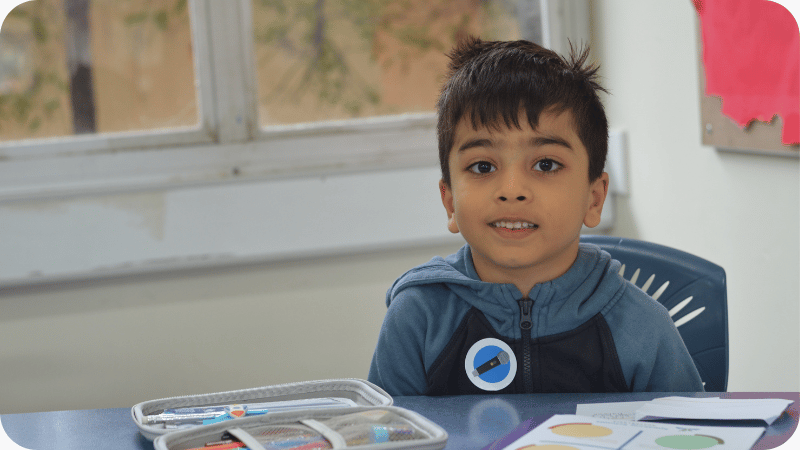
It can reduce procrastination and make speech writing easier to begin
Sometimes the most disappointing experiences for kids in public speaking come from the feeling that they were not fully prepared or wrote their speech too late to practice.
If you can relate to this – don’t worry! It’s a more common issue than you may think.
A lot of the time, the task of sitting down to write a speech is overwhelming because there are so many elements. The tasks involved include brainstorming ideas, researching, writing, checking the length, rehearsing, adding hand gestures, and even editing! If you add the fact that lots of kids are full of ideas to include in their speech, or struggling to come up with any ideas at all, you have the perfect storm for putting off the job of writing the speech altogether! So – how can having a speech structure in mind help this?
Want to learn more about coming up with exciting topics? Check out our blogs on picking the perfect speech topic and 101 incredible public speaking topics to see how to use your passion to make your next presentation even more engaging!
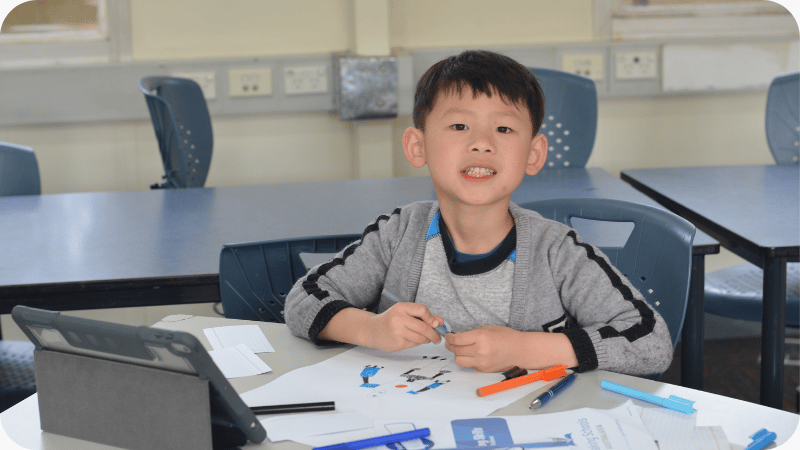
It makes speech writing faster
This is because having a structure to follow is like having a recipe. It reduces the feeling of having to come up with all the elements from scratch and can allow kids to focus on filling in the blanks with content that they’ve gathered while researching.
It also reduces anxiety. Having a structure can be helpful in reducing the anxieties of public speaking. It can help the speaker to know where they’re going in their speech, instead of feeling like they’re “winging it”.
It also makes it faster because it allows kids to work on one part of the speech at a time – if they are really stuck on their introduction they can move on to a body paragraph instead!
Now that we understand the purpose of speech structure for kids, let’s look at the different parts of a speech and how to go about structuring them.
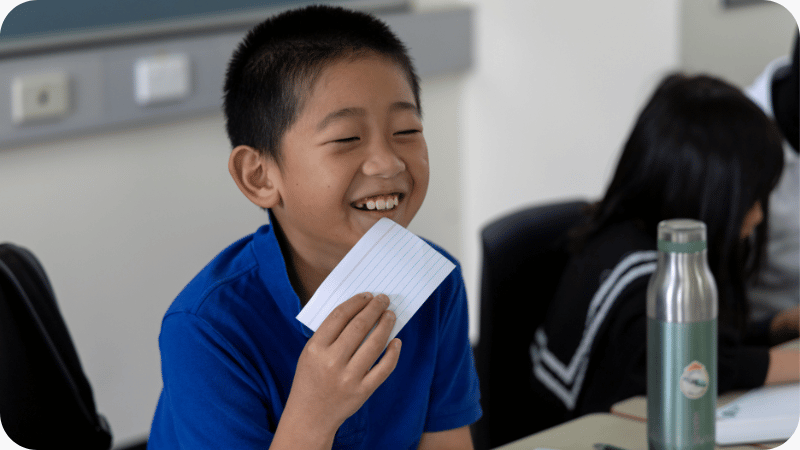
The different parts of a speech
The first step towards having an excellent speech structure is to understand the different parts of a speech. Lots of people know that speeches can be broken down into their introduction, body, and conclusion. But did you know that each of these three parts can be further broken down as well? That’s why it’s important to know that there are two main types of structure in a speech: macrostructure and microstructure.
What is a macrostructure?
A macrostructure is the broader framework of a speech. This is the structure that most people are familiar with: the introduction, body, and conclusion.
An example of speech macrostructure for kids could be:
- Introduction
- Body Paragraph 1
- Body Paragraph 2
- Body Paragraph 3
- Conclusion
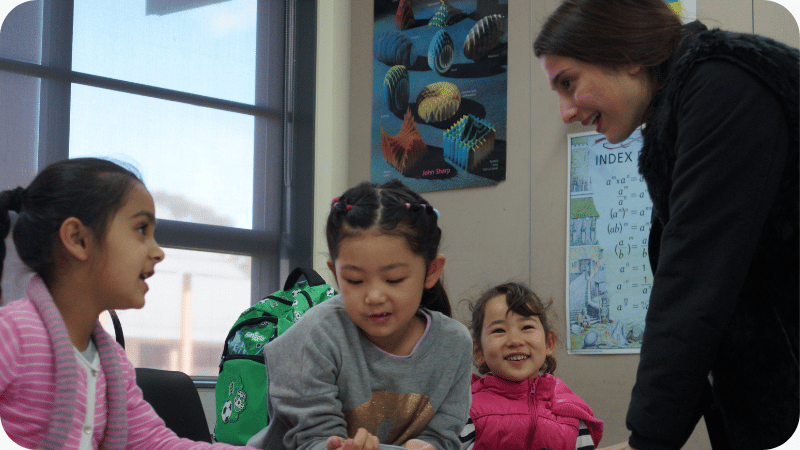
What is a microstructure?
A microstructure is an individual scaffold or framework that can be used for each of the main parts of the speech. It is a smaller structure for each individual part. The microstructure includes all the elements like evidence, examples, explanations, and links to your main topic. You can have a microstructure for your introduction, a microstructure for your body paragraph, and a microstructure for your conclusion!
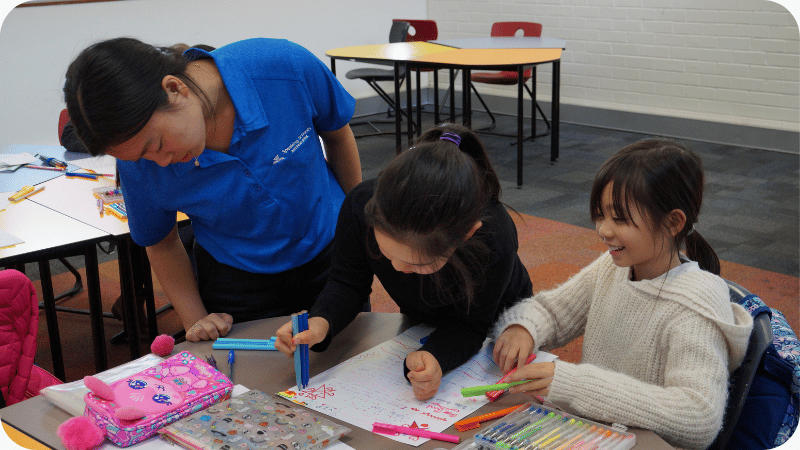
How to structure a speech introduction for kids
The introduction of a speech is one of the most important parts. It sets the tone for the rest of your content and should be memorable. An effective introduction will pique the audience’s interest, give them an idea of what the speech will be about, and provide a roadmap for them to follow. It should also give an overview of the main points that you’ll cover in the body paragraphs.
There are a couple of different ways to structure an introduction for kids’ speeches. One great structure you can use is ‘CATS’.
C: Catchy Opening
A: Address the Audience
T: Introduce the Topic
S: Summary of Points
This four-step recipe for an introduction covers all the important bases that are needed in a presentation. It’s also great because it reminds kids to grab the audience’s attention with something catchy before starting their other introductory work!
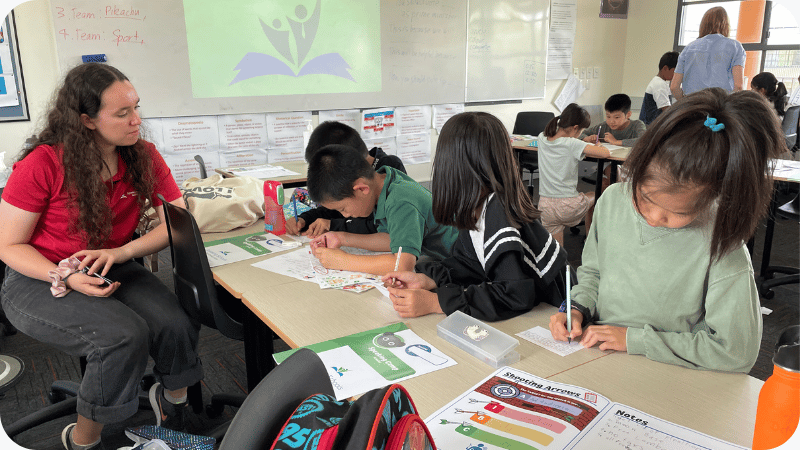
How to structure a speech body paragraph for kids
Body paragraphs are the heart and soul of a speech. They allow each individual idea to be neatly and thoroughly explored in a way that makes sense to the audience before you move on to the next idea. Typically, kids will have three body paragraphs in their speech, but this number can change depending on age and topic area!
A great structure for body paragraphs is PEEL.
P: Point – Introduce the main point you are discussing
E: Explain – Explain and expand on your point
E: Example – Provide an example to support your explanation
L: Link – Link the point back to the main topic
PEEL is a much-loved structure that is used in lots of different writing tasks for kids. It’s important to remember when using this structure for a speech that your overall purpose is to write something for people to listen to, not to be read on a page. This can influence our word choices and sentence length – so make sure to keep in mind that you want your speech to be engaging and exciting!
If you want to learn how to use PEEL for a kid’s presentation, you can check out our video below.
How to structure a speech conclusion for kids
Structuring a speech conclusion can be difficult, especially because there is lots of confusing advice out there! Have you ever heard that a conclusion should be your introduction restated? Or that a conclusion should be 50% of the instruction plus a call to action? It can be hard to know which tips are right, but luckily there is one easy-to-remember structure that will help kids to get their conclusion just right.
The ‘ESC’ Structure is perfect for kids’ speech conclusions.
E: Ending Phrase – Use a strong, memorable closing phrase
S: Summarise – Summarise the main points of your speech
C: Call to Action – Give a call to action or thought-provoking question
The ESC Structure is great because it is easy to remember and can be adapted to different speech topics.
If you want to learn more about ESC, check out our videos below.
How to use a speech structure for kids
Now that you know exactly what a speech structure for kids looks like – how should you use it?
Take time to understand the structures
The best way is to help your child learn about these structures and what they mean. The most meaningful part of the experience of using a speech structure for kids is helping your child to understand why each individual element is important and what it should look like when it is completed.
Practice, practice, practice!
The best way to make sure that your child is ready to use their speech structure when they give their presentation is to practice, practice, practice!
When they are practising, make sure that they use the PEEL and ESC structures as a guide. This will help them to understand how their individual points fit into the bigger picture and give them the confidence they need to deliver an effective speech.
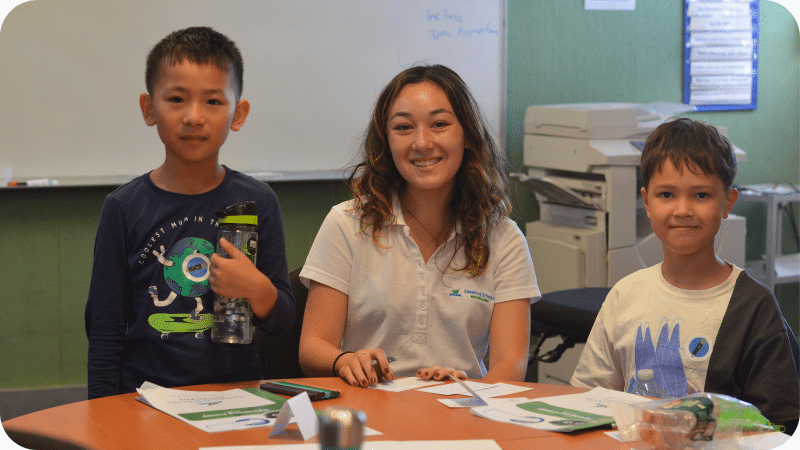
Want to learn more about how to make an amazing presentation? Check out our blog to find out how!
Ask someone for guidance
It’s okay if your child doesn’t understand the structure on the first try! There are lots of ways to learn, and the process of practising is the best way. It may take a few practice runs to understand how to use the structure.
One of the best ways for kids to learn how to use a speech structure is to have them work with a teacher or coach who is experienced with the structure and knows how it works. Our public speaking courses are specially designed to introduce these structures at a level that is appropriate for your child’s age and experience level.
Kids are able to join our public speaking coaches online via Zoom or in person both after school and during the school holidays to learn all about public speaking, including how to structure a speech. Our classes all come with handy materials and workbooks that clearly have the structures laid out for kids to use with worked examples to help their understanding.
Check out our video below to find out more about our public speaking classes and how they can help your child.
Having a structure for kids to use when they are writing and delivering their speech is an important tool that will help them to communicate effectively. The CATS, PEEL and ESC Structures are some of the most popular structures used today, and it is easy to teach your child how to use these tools with practice and the guidance of experienced public speaking coaches. With these structures, your children will be able to deliver a memorable and impactful speech!
Remember: practice makes perfect. So grab a workbook, sit down with your child and get ready to explore the world of public speaking! Good luck!
Ready to help your child unleash their inner speaker? Check out our public speaking courses and get started today!
It’s only natural that as a parent, you want your children to grow into confident adults who can express their thoughts and ideas in front of an audience without any fear.
Getting the better of this anxiety also has positive ramifications for other areas in life, such as school, social situations, and eventually life after school.
But for shy children, public speaking can be really hard, and standing up in front of a crowd could be one of the scariest experiences they can imagine. Thankfully, there are lots of ways you can help your child overcome their fear of public speaking.
Let’s explore eight effective tips and strategies to help kids find their inner confidence.
Whilst reading, make sure to keep in mind that everyone is different, so your child may resonate with some of these public speaking tips more than others!
1. Pick a topic that shows off your public speaking skills
Before implementing different strategies, it is important to ascertain what your goals are and what you are hoping to achieve. Ask yourself:
What are my child’s strengths?
What are my child’s interests?
How can they translate into an effective and engaging presentation?
Your child can start by pretending to be talking to a friend about a shared passion or interest, ideally as if they were in everyday conversation. Most people in an audience identify with a speaker who is interested in the material they are discussing as part of the speech – and has the body language and passion to speak up about it in an engaging manner – so a fantastic way to start is to ensure that kids speak about topics that interest them.
You can learn more about picking the perfect topic and how to start speeches in our other blogs!

2. Start small in a comfortable environment
Once your child has chosen their topic material, start small and build up their public speaking capabilities over time.
Your child can practice speaking in front of a small audience before tackling a larger crowd – the fewer faces (and the friendlier the faces), the less daunting it is to practice your public speaking skills in front of a crowd, no matter the size.
Invite a few family members or friends for dinner and discuss things that actively interest your child – pick an idea and focus the discussion on it, giving them lots of opportunities to speak. If they’re feeling shy, actively encourage them to talk with questions that stay on point.
Alternatively, you can also use things like board games (Articulate for Kids is a good one) where children are required to engage with spoken language at home and are forced to speak up to participate in the activity.
Not only will these give your child the opportunity to practice without any added pressure in a relatively stress-free environment, but they will also give them the opportunity to practice their social skills and help overcome any shyness they may have in that department as well!
Finally, you will also potentially want to debrief later on, and mention quietly to them how well they did, or that you enjoyed listening to them express themselves, or how glad you are they got involved in the discussion – this positive reinforcement, especially if they get a sense that you’re being genuine about it, can make a massive difference to their confidence levels and can go a long way to overcoming shyness.
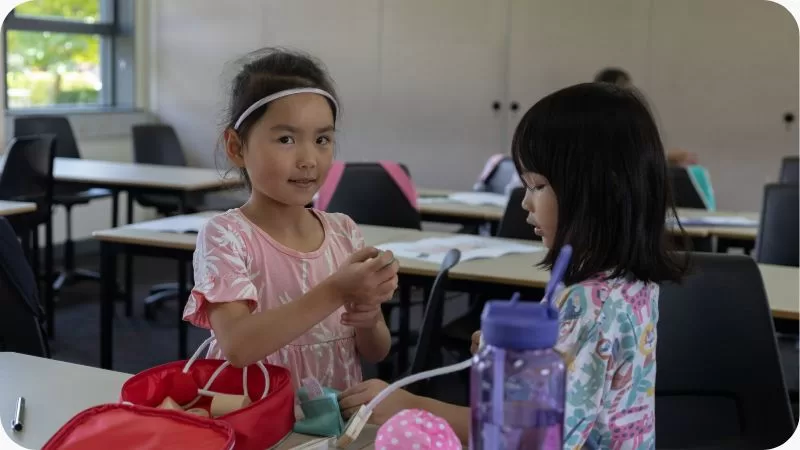
3. Discuss Their Fears of Public Speaking
Talking about fears and anxieties is often the first step toward overcoming them. This might range from simple stage fright to glossophobia more generally.
You may potentially want to ask your child what makes them nervous about speaking in public and encourage them to talk through their worries with you and other members of the family.
Reassure them that everyone gets scared sometimes – even you – but by facing their fears head-on, they can become more confident in their abilities as a speaker. As we’ll look at below, regularly practising your public speaking skills can make a real difference to your confidence levels, especially for someone who is innately quite shy.
You can also take this further, and discuss what they think will happen when they get up to present – what is their worst-case scenario? Most of the time, it involves their audience laughing at them – if this is the case, remind them that most people in the crowd, especially other kids, understand what it’s like to feel nervous (and many know what it feels like to be shy) and that they are almost always on the speaker’s side!
During these discussions, it is important to empathise and show your child that even a shy person can be confident when public speaking. Nervous energy can be advantageous when overcoming shyness, especially when redirecting that energy into a heartfelt speech – public speakers are much more engaging to watch someone speak with animated body language and power behind their words!
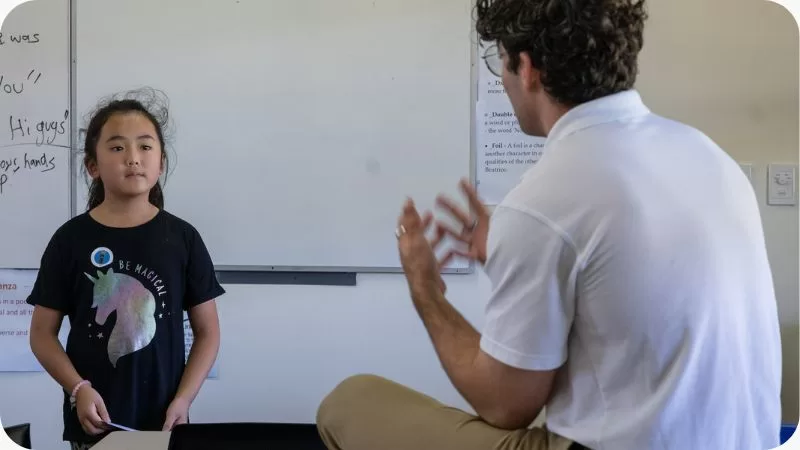
4. Lots and lots of practice
Like almost anything and everything in life, practice makes perfect. There’s a good reason it’s an age-old saying!
The more your shy child practices and refines their public speaking skills, the more they grow used to it, even if it isn’t something that comes naturally to them. Like any skill, practising once or twice isn’t going to make a huge difference, especially for shy people. Instead, the focus should be on presenting to a group regularly, receiving feedback, and then giving the speech another go. It is only once students have a significant amount of public speaking practice that it becomes second nature and instils a newfound self-confidence.
That said, speeches often pop up in our lives when we least suspect, and you may not feel ready to give a talk to your peers – what should your child do then?
Set aside time to have them practice in front of a small group (ideally family members and a friend – people they’re comfortable with). If their shyness prevents even this, you may want to offer them a mirror (which is less effective) or to film themselves (which is more effective, as they can look back on it later).
The important thing is to ensure they deliver their presentation to you several times before they go public. When practising with you or another family member (or even reflecting on a video they took of themselves), it is an excellent opportunity for them to refine things like eye contact, voice volume, body language, and even nonverbal communication – it can even provide a chance to add more advanced elements to their speech, such as inclusive language and rhetorical questions.
You can even get them to run through their presentation without palm cards or notes in a conversational tone – not only is this an example of how to improve speaking manner, but it also means that they will learn how to keep on message even if they forget elements of their speech.
Make sure that your child has plenty of time to prepare for any presentations thoroughly, so they feel more comfortable when it comes time to deliver them in front of a less familiar audience. Speak with them about the ideas and topics they would like to include in their speech, and the message they want to convey so that they know their material almost (but never totally) by heart. This is a valuable tactic so that they can maintain a conversational tone instead of reading off palm cards word for word.
Remember, practice makes perfect!
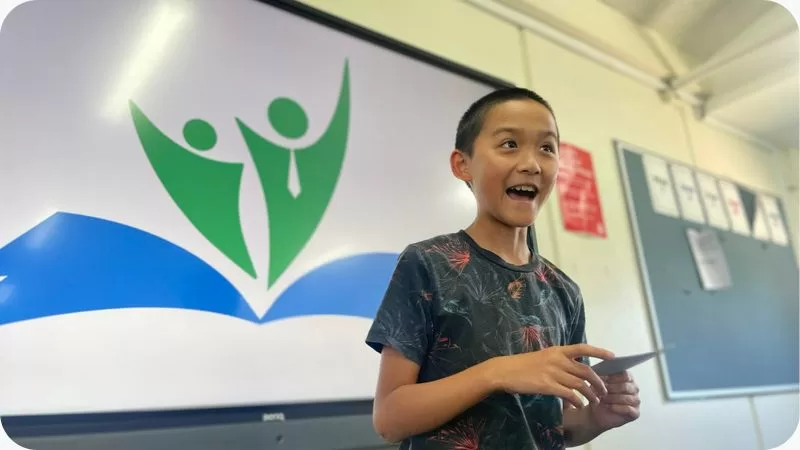
5. Visualise Success
Visualisation is one of the most powerful tools we have for calming our nerves before speaking in public. Whilst this may not work for younger kids, it is an increasingly effective technique as students grow older.
Have your child close their eyes and visualise themselves delivering a fantastic speech that elicits applause from the audience afterwards. Sit with it for a few moments. How does it make them feel?
This technique, which derives from mindfulness practice, is a proven method for helping to build confidence and reduce feelings of anxiety and shyness before speaking publicly. Believe it or not, your child is more likely to deliver an engaging presentation when they imagine being happy while speaking – putting on a smile can make you smile naturally!
One part of visualising success is remembering that the audience is not judging but instead listening intently to the speaker’s ideas and message. Many children (and even adults) start off feeling nervous when they first give presentations, so most of those in the crowd will know precisely what it feels like to be shy.
But what if your child makes a mistake or uses the wrong words? Most of the time, the audience won’t even notice. Think about a concert pianist playing a brand new piece of music the audience has never heard. What would happen if they played the wrong note? Unless they drew attention to it and insisted that they start again, almost certainly nothing – they just continue as if nothing went wrong, and the audience is none the wiser. It is the same for public speaking – particular words don’t matter if you stay on message!

6. Slow Down & Breathe
Often it isn’t just the words that matter when you speak – it is also the negative space and where one takes a rest that makes a massive difference to how speeches are perceived.
Remind your child not to rush through their presentation – pausing between sentences (and especially after an important point) helps break it up into smaller chunks which will make it easier for them to manage (and for their audience to understand).
Additionally, breaking up the flow allows your child to present a clearer message, allowing the audience to focus more on an important idea and follow the presentation better.
You and your child can practice dividing your speech into sections bit by bit. One helpful way of doing this is to use a coloured marker and leave dots wherever you want to take a breath – this can also act as an opportunity to look up when you talk, allowing you to focus in on your audience as they watch your speech.
Additionally, taking deep breaths throughout (and especially just before your begin your talk) will help regulate your breathing patterns and lower your heart rate, which can reduce feelings of panic or anxiety during the speech itself.
One way you can work on this is by practising breathing exercises before public speaking – watch the video below for some specific techniques they might be able to use to help with your pausing! Whilst it seems very simple, a few deep breaths can allow better focus and keep the anxiety away.
7. Celebrate Small Victories
Every small victory should be celebrated!
Encourage your child whenever they take on new challenges or experience success when overcoming obstacles within their journey towards becoming a confident public speaker.
For example, did they put up their hand in class today? Fantastic! Did they speak with a person they wouldn’t normally? Brilliant! Did they express their opinion even though they were feeling nervous? Awesome!
Acknowledging these victories lets them know that you are proud of how far they’ve come already and serves as motivation for pushing forward further still. Positive reinforcement is imperative to ensure that your child can gain a sense of satisfaction from their speaking ability, and in turn, will give them the push to continue their journey in becoming confident speakers.
But what if they didn’t do any of those things? Negative reinforcement – even subtle negative reinforcement – won’t get near the same results as constructive and supportive feedback. Rather than criticising, it is much more important to be understanding of what happened, discussing why that was the case, and encouraging them with proactive strategies to ensure that they’re just that little more comfortable when they’re next talking to a person or in front of an audience.
Positivity in these circumstances will not only help your child when they make their next speech, but also boost their confidence in their school life and social life as well.
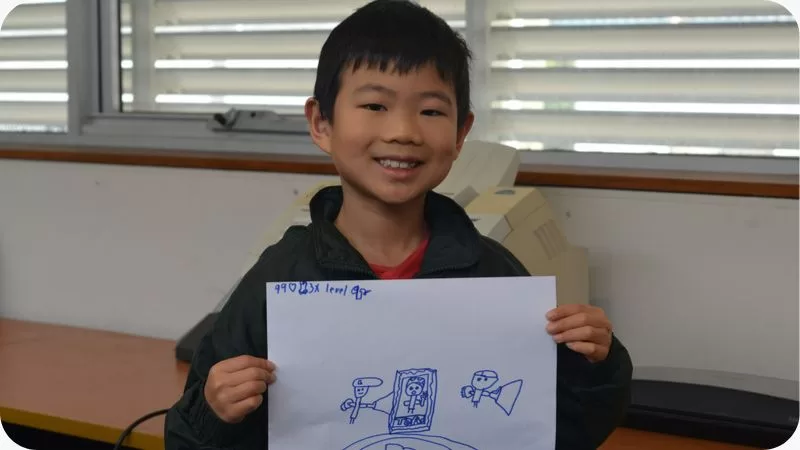
8. Take advantage of resources available to shy people
Public speaking is, thankfully, a skill that can be taught.
Participating in programs (for example, those offered by Speaking Schools Australasia) is a great way for introverts to receive guidance on how best to tackle public speaking tasks, as well as gain support from their peers in the same situation.
These types of courses are tailored towards people who may be feeling uncomfortable when public speaking and can help to build confidence by providing an environment and audience where everyone is supported regardless of their background or communication skills.
By providing tips, tricks and a welcoming audience for all speakers, speakers of all ages can take a stand and create speeches that have a strong message and can be delivered with power.
You can hear more about the programs Speaking Schools Australasia offers (and how they help speakers develop their communication and speech-crafting skills) on our website.
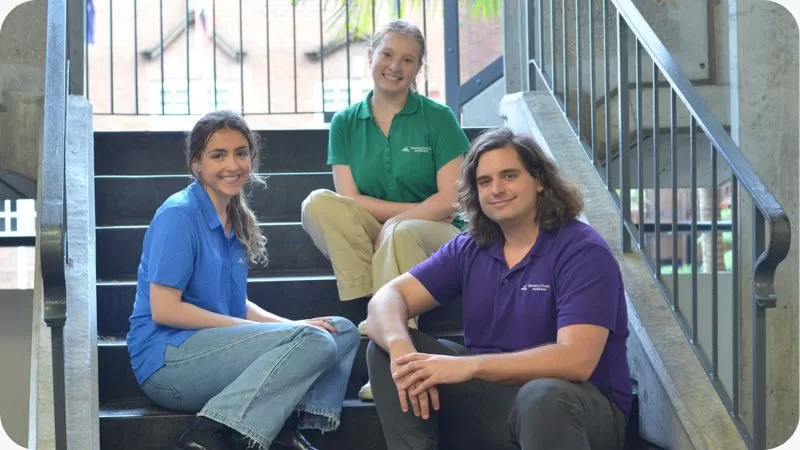
Putting public speaking plans into action
Public speaking can be a daunting prospect for young people who are new to it.
But with patience, determination, and practice, even shy people can gradually grow to overcome fear and anxiety, and become confident public speakers when they next need to give a speech to an audience.
So what are you waiting for? You never know, public speaking could even become one of your child’s favourite activities.
Want more public speaking tips and tricks?
SSA is on a mission to raise awareness on how to deliver effective and engaging speeches to an audience of any size.
We believe that every child has an inner speaker, that great communication skills can be taught and that any student – regardless of how shy – can find their voice and create a speech that shares their feelings on any given topic.
For further public speaking tips, make sure to check out the other blog pages on our website or videos on our YouTube – you can learn even more about overcoming stage fright in the below video!